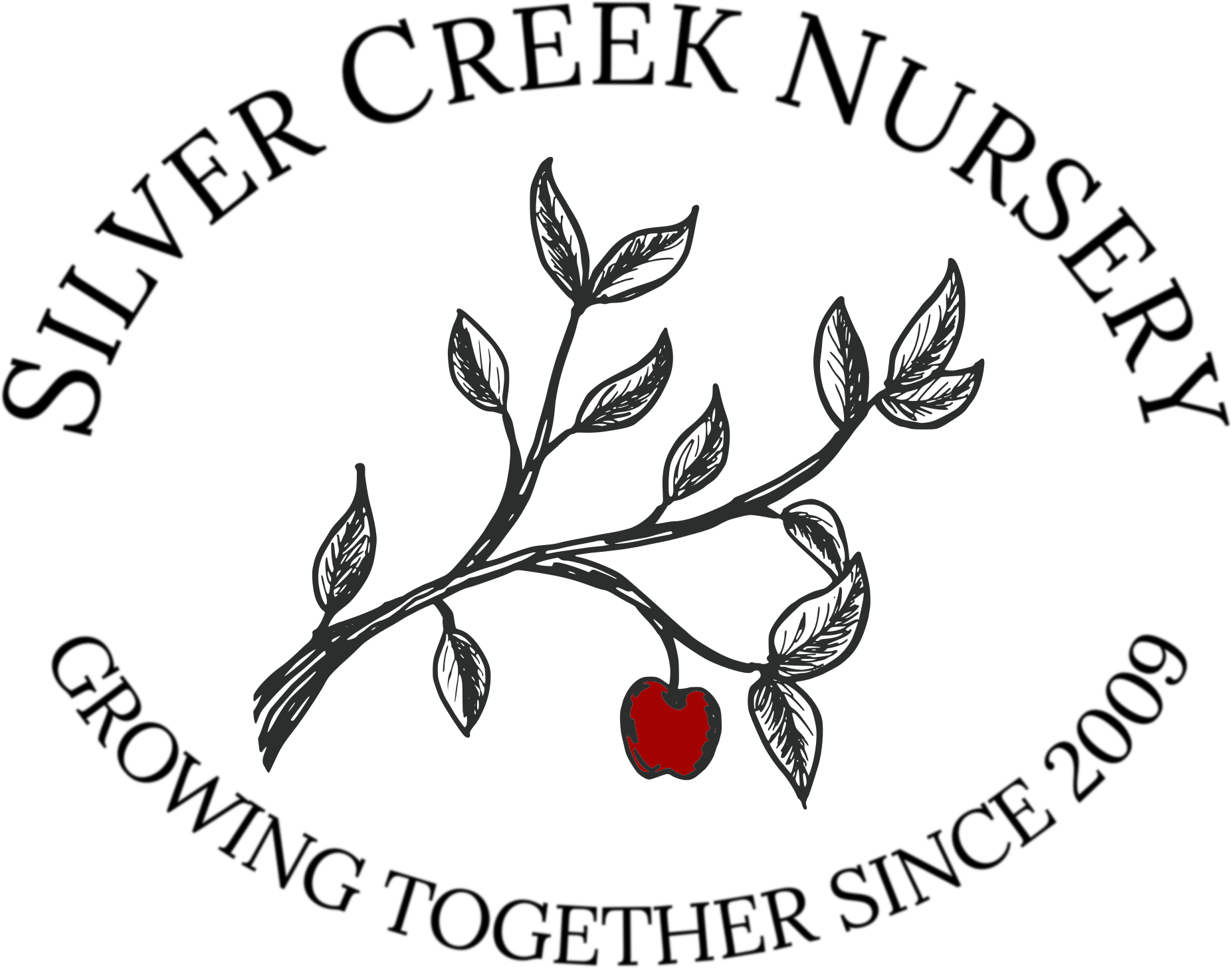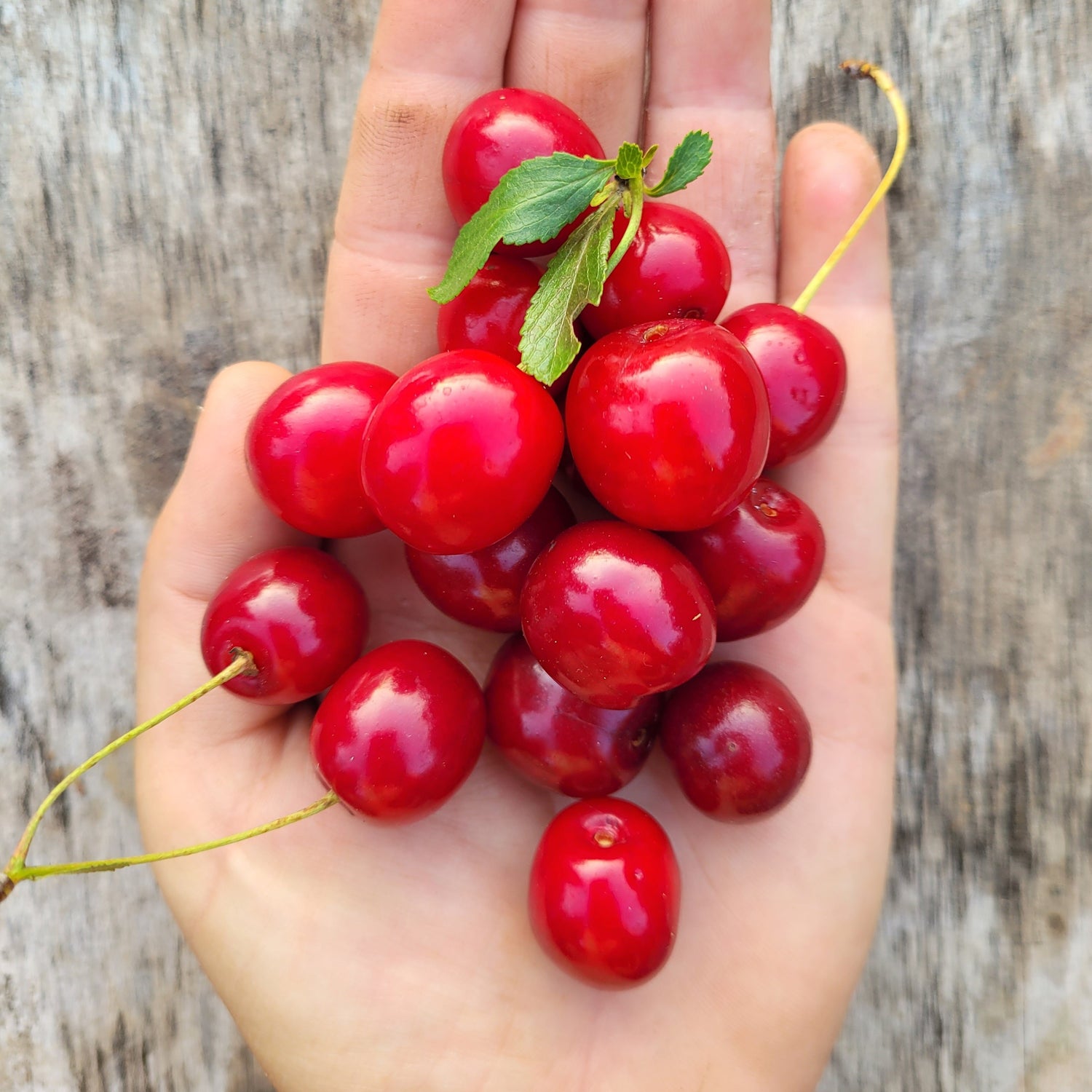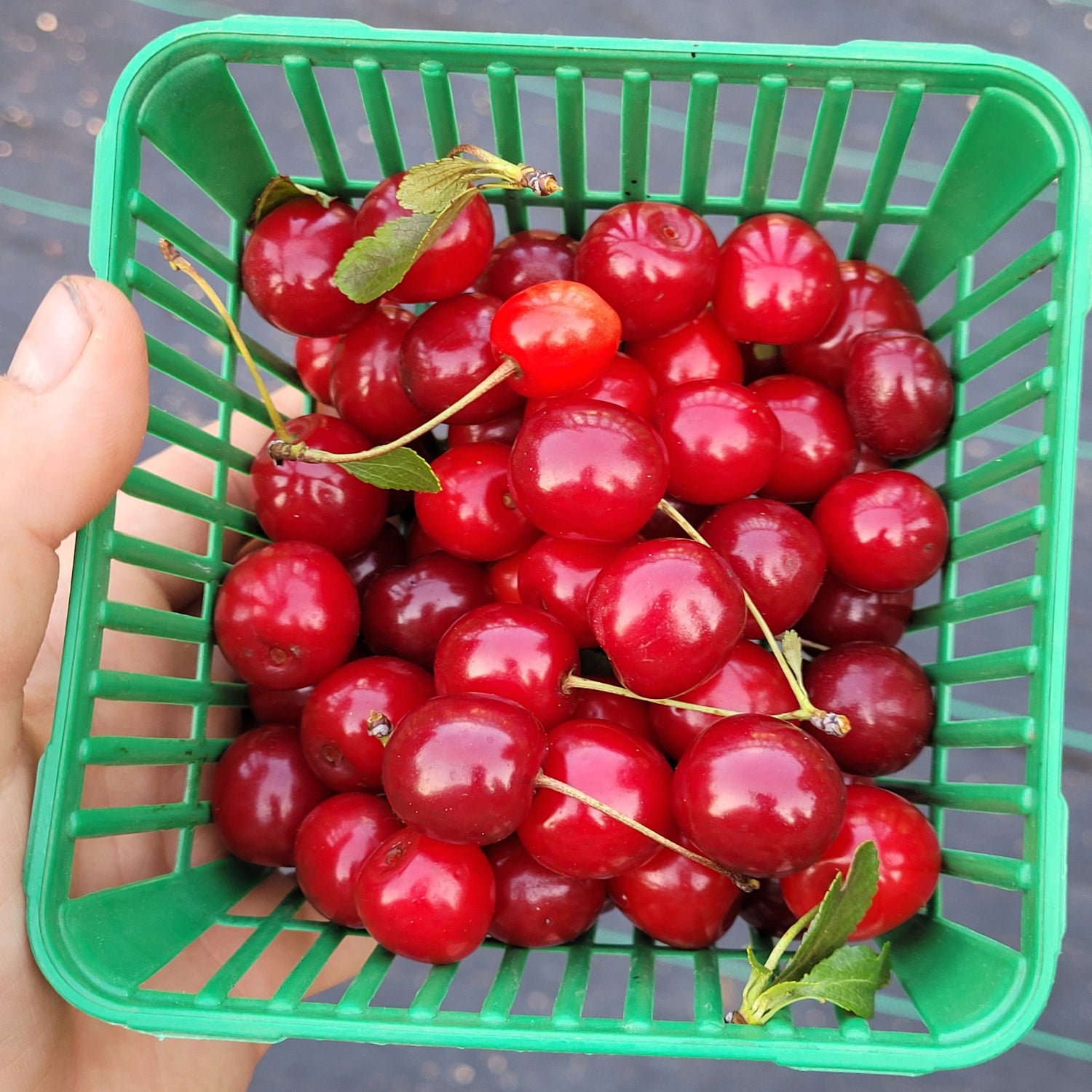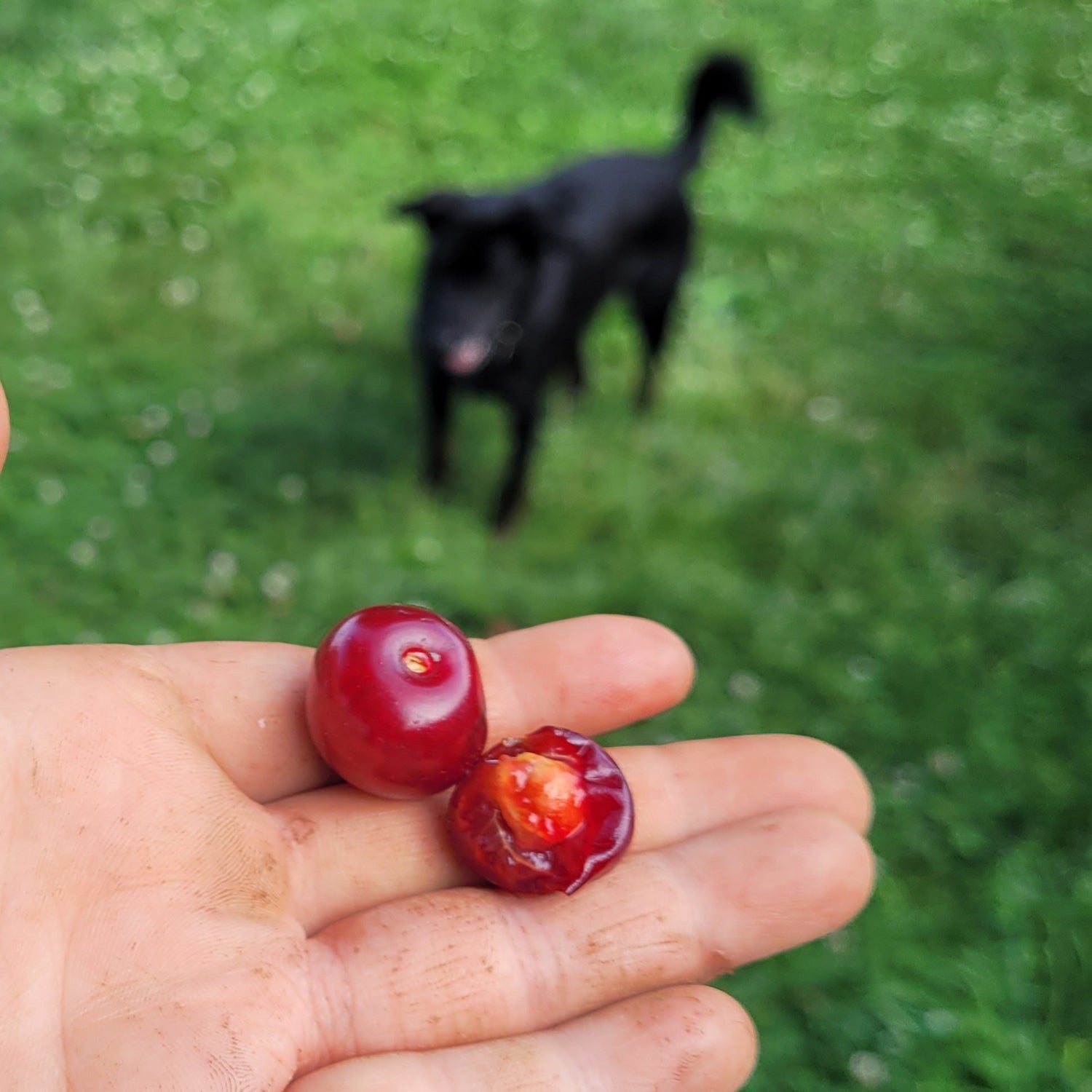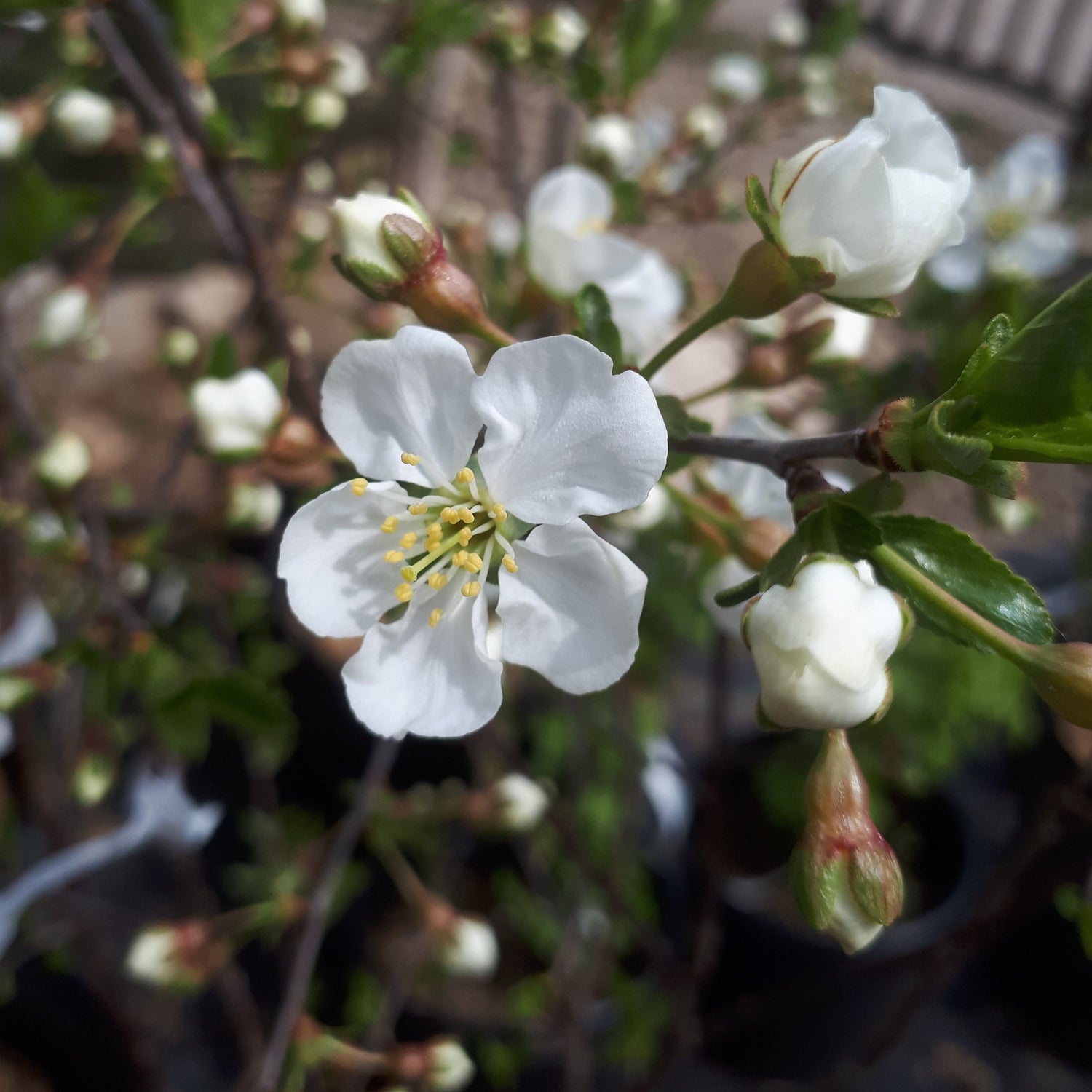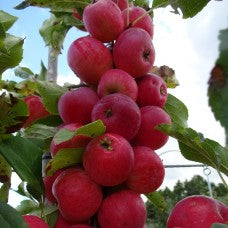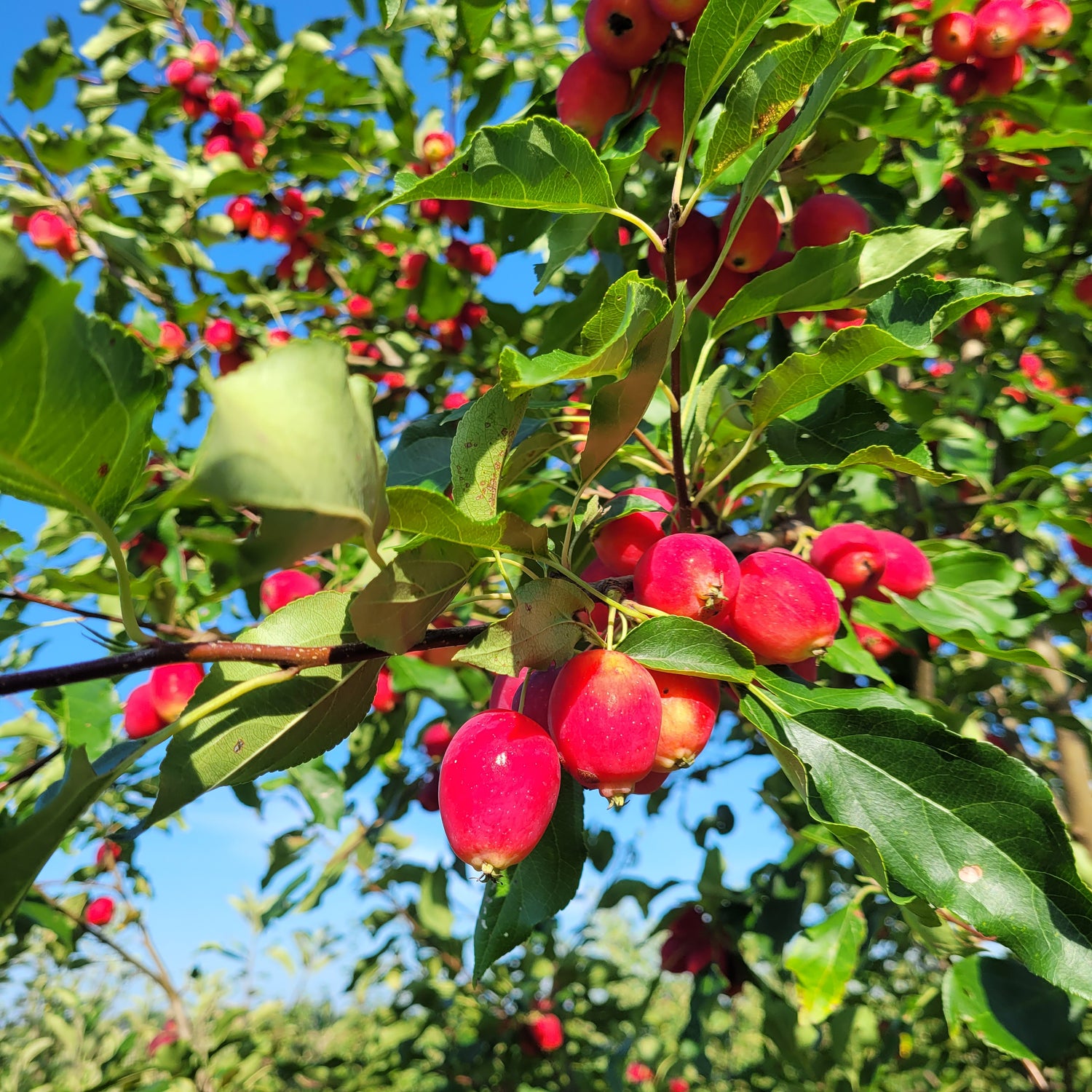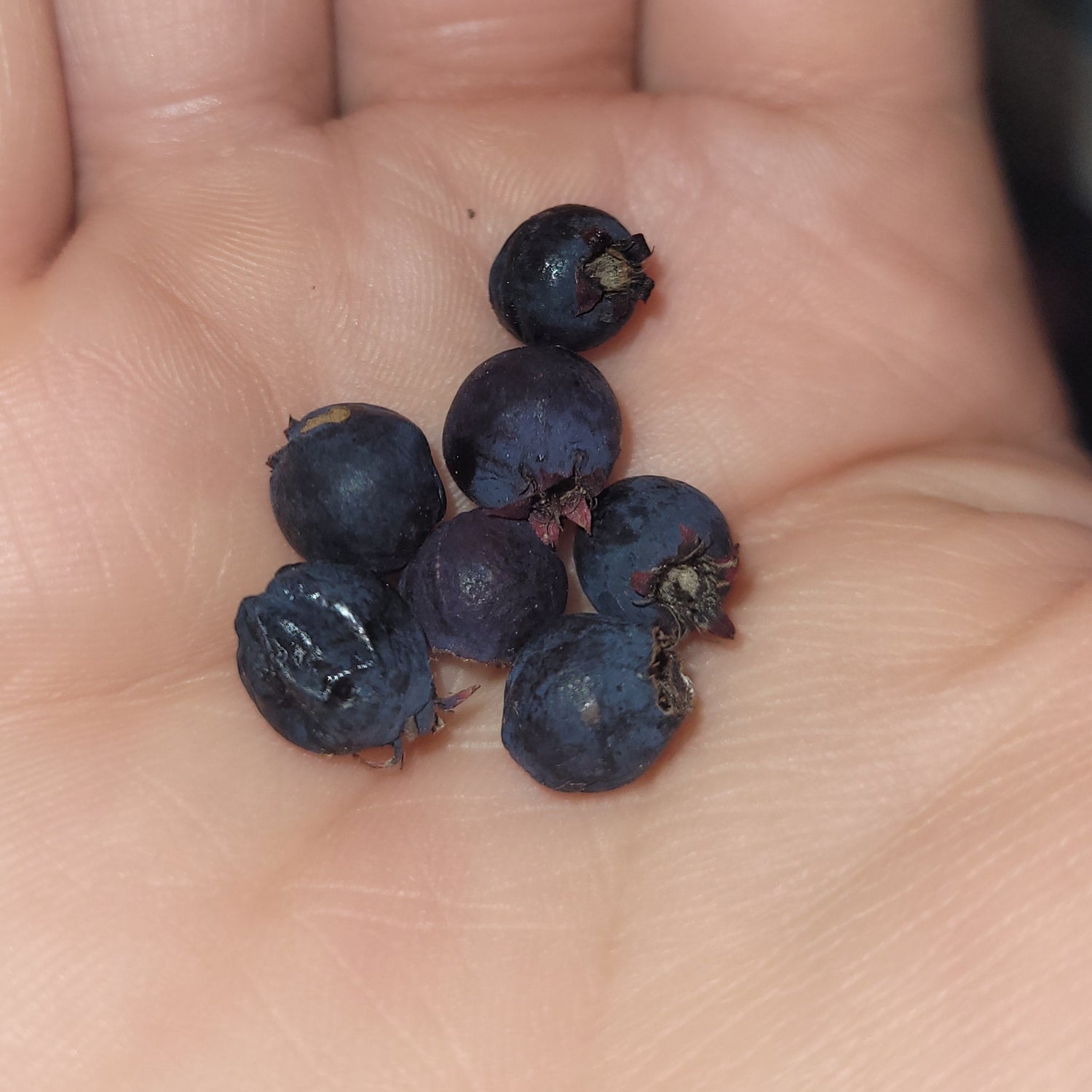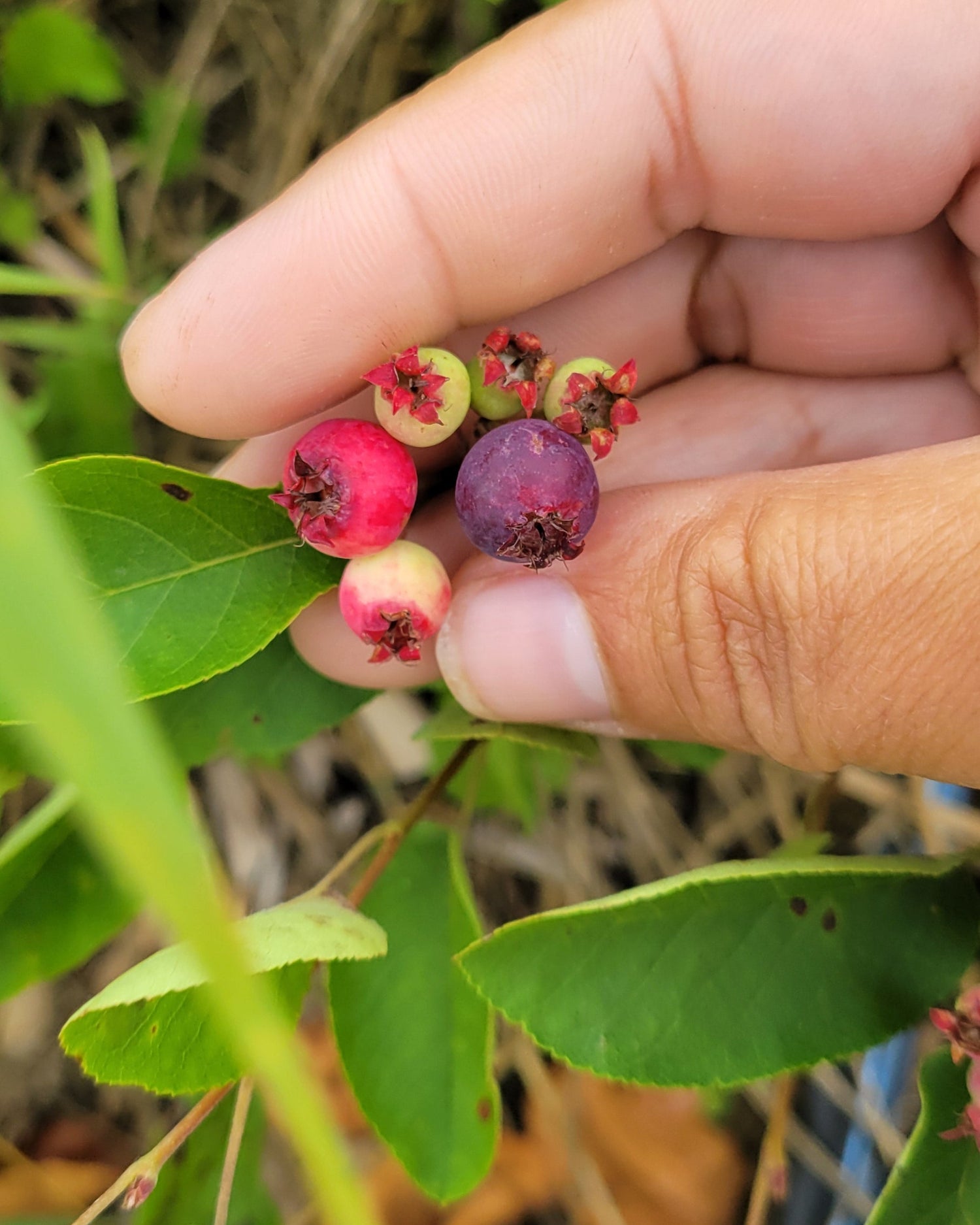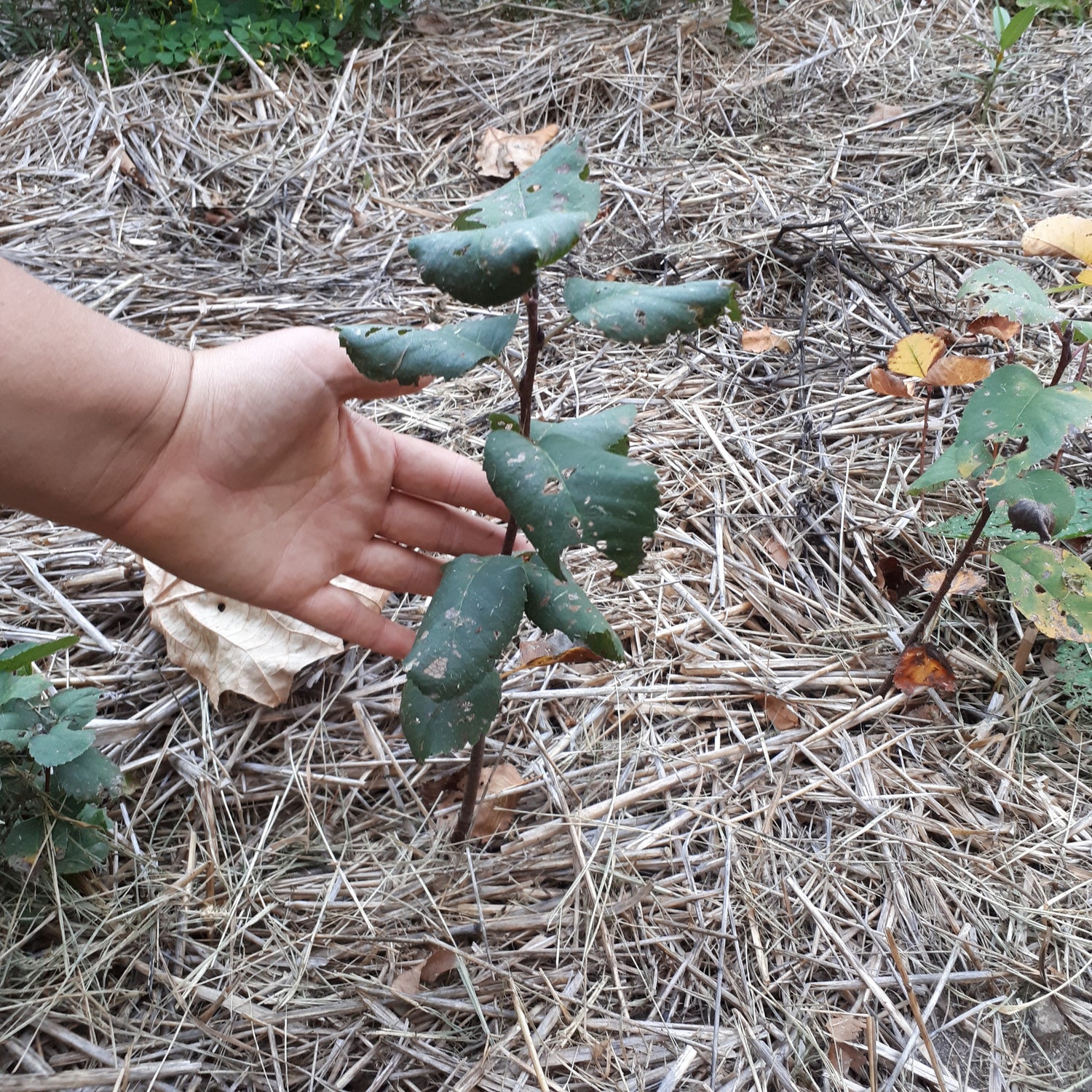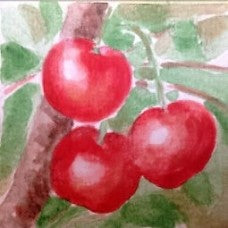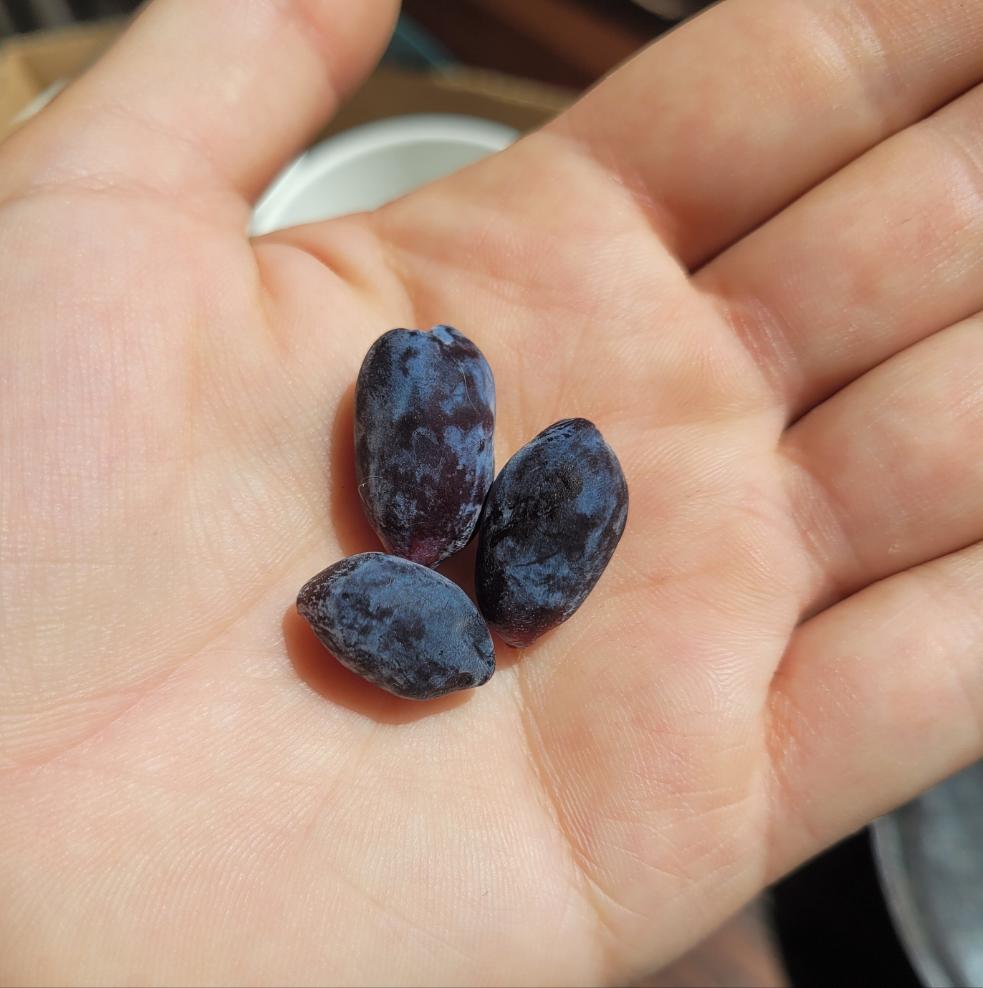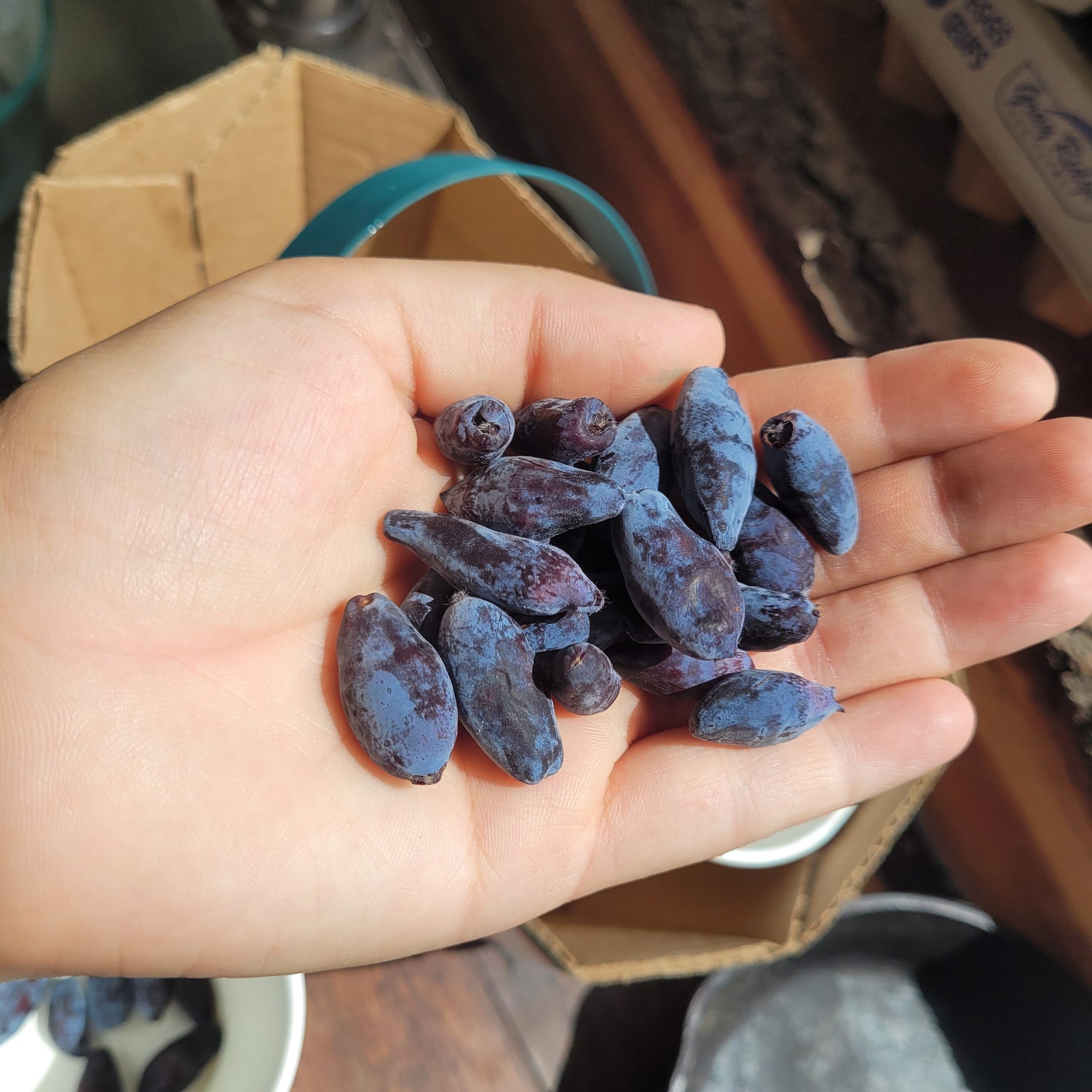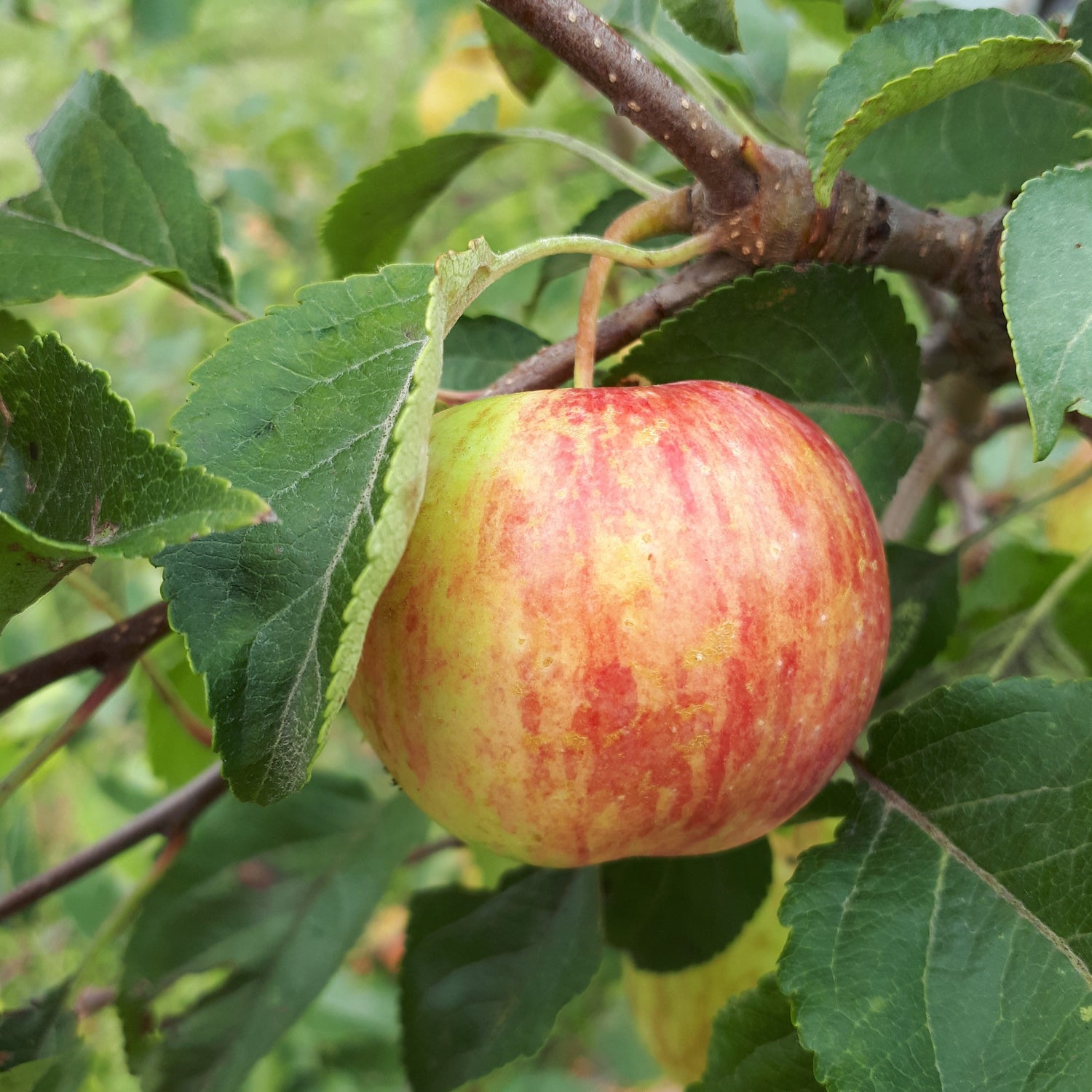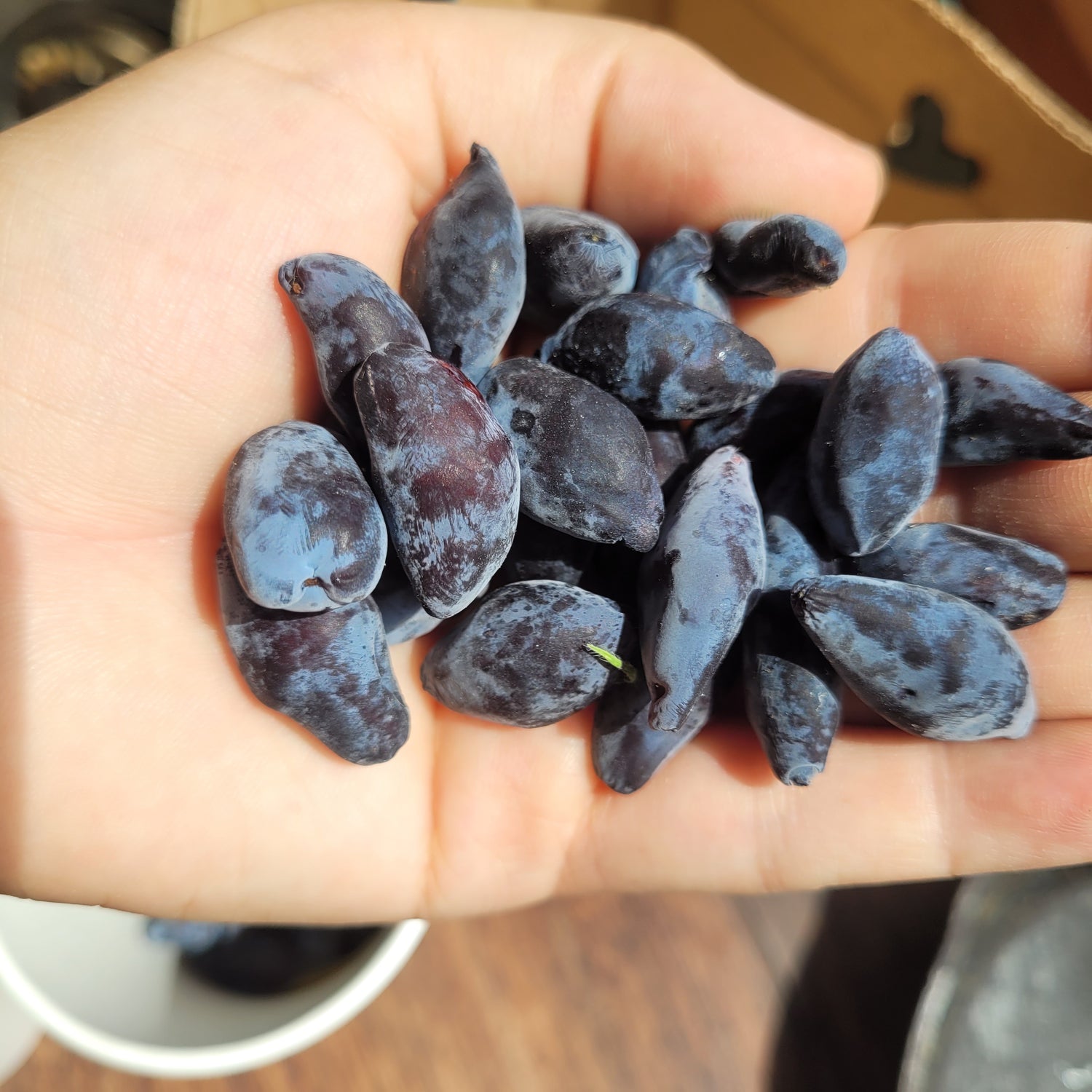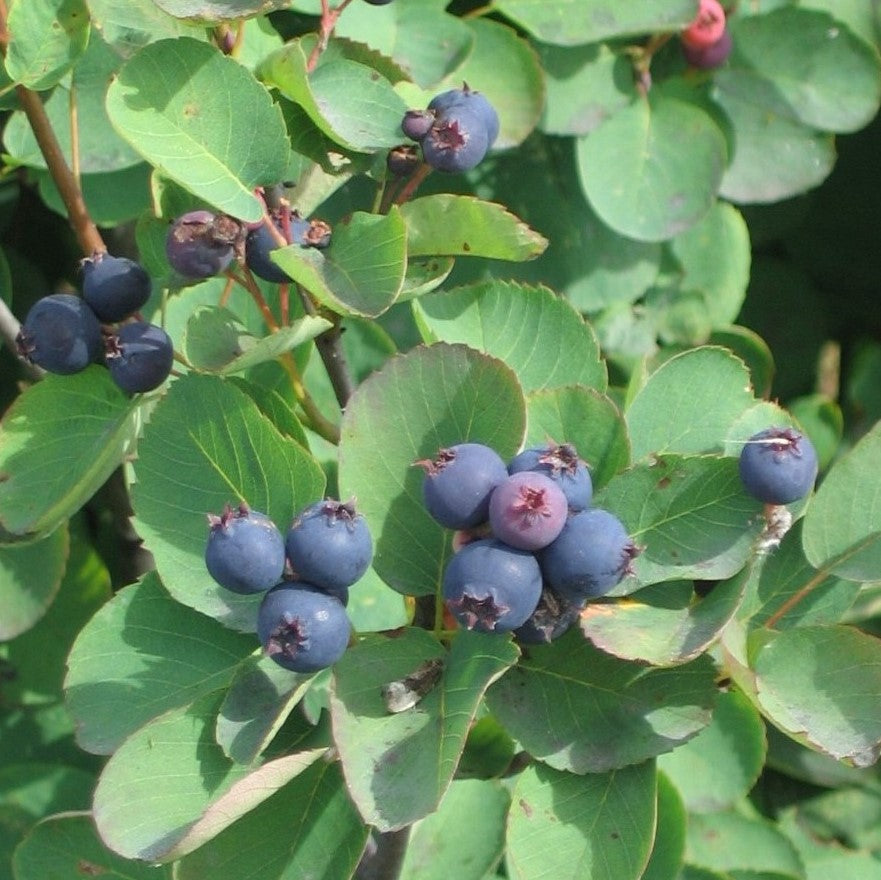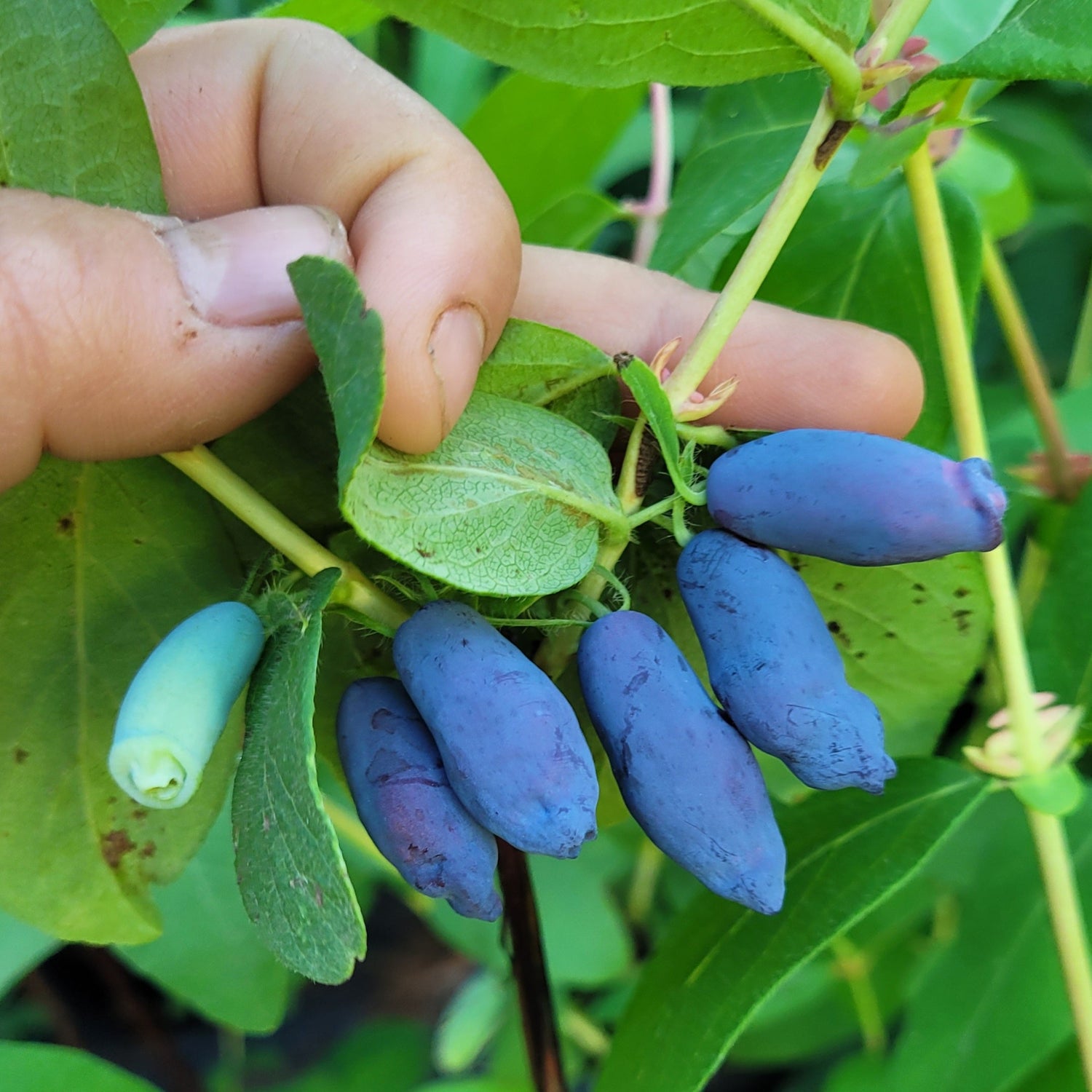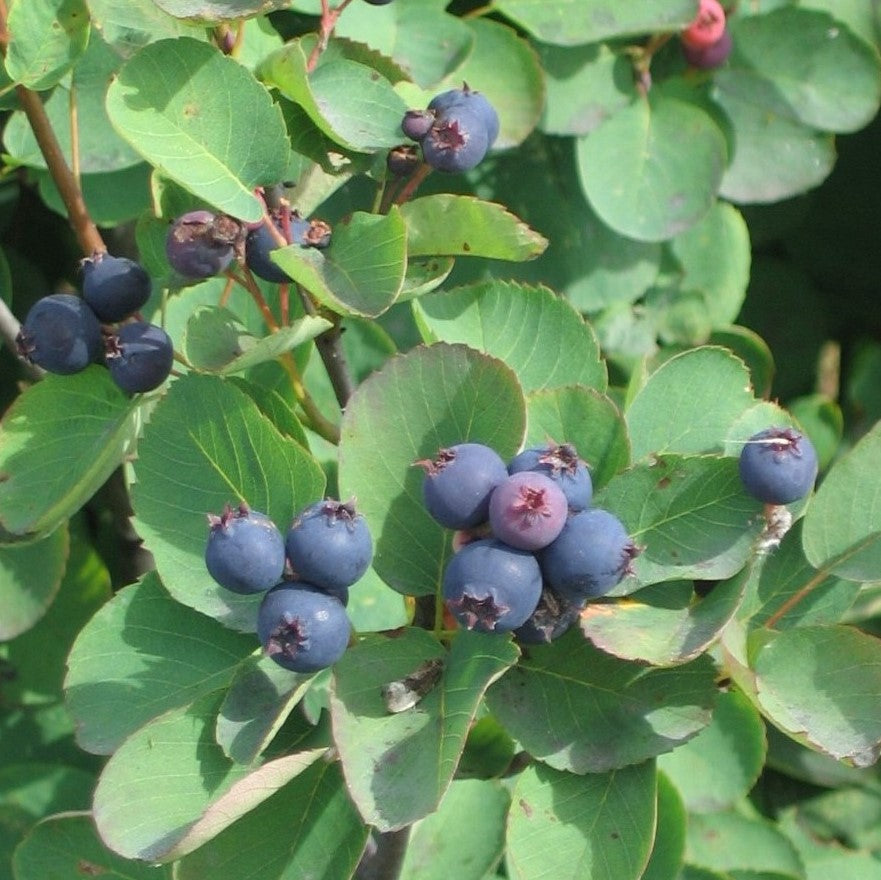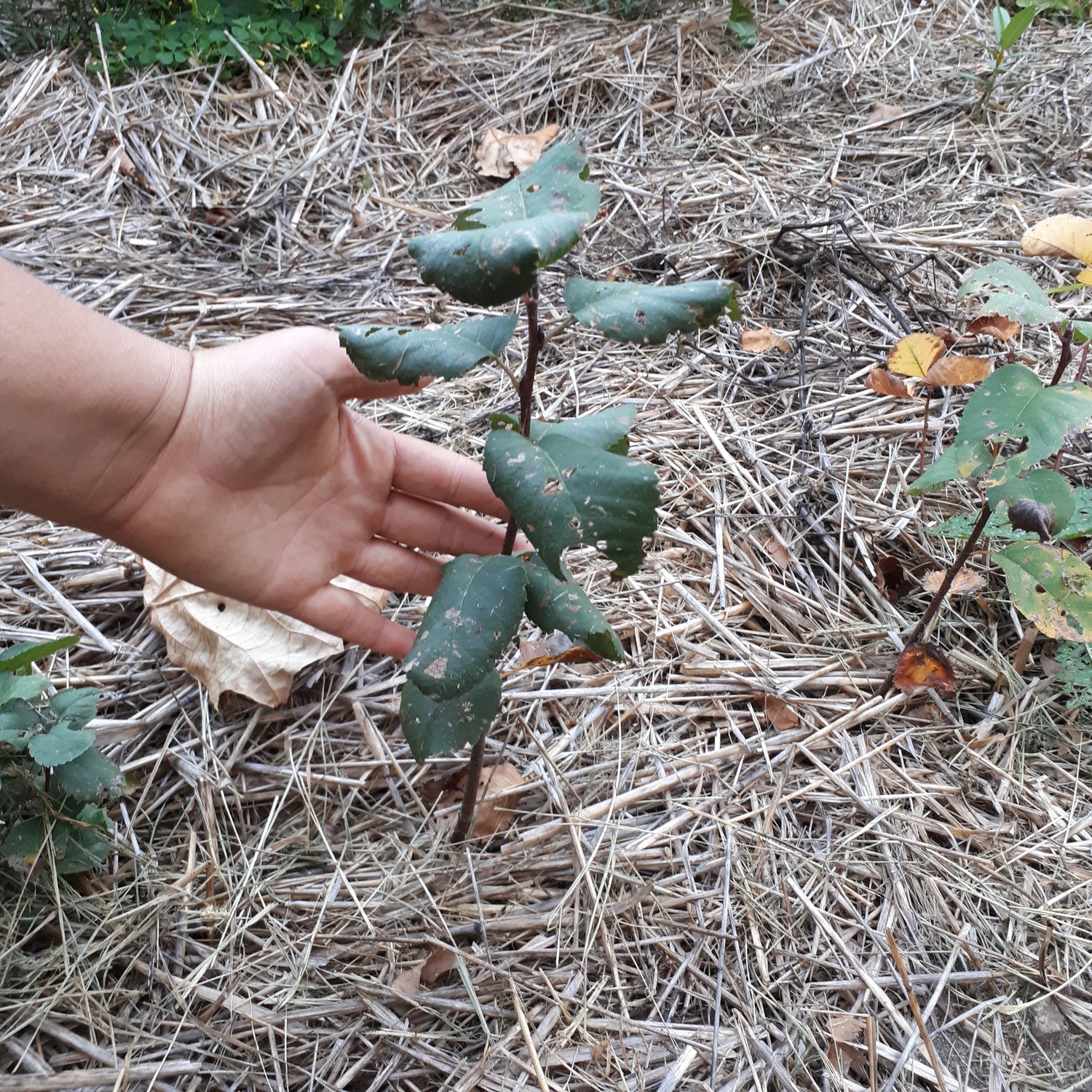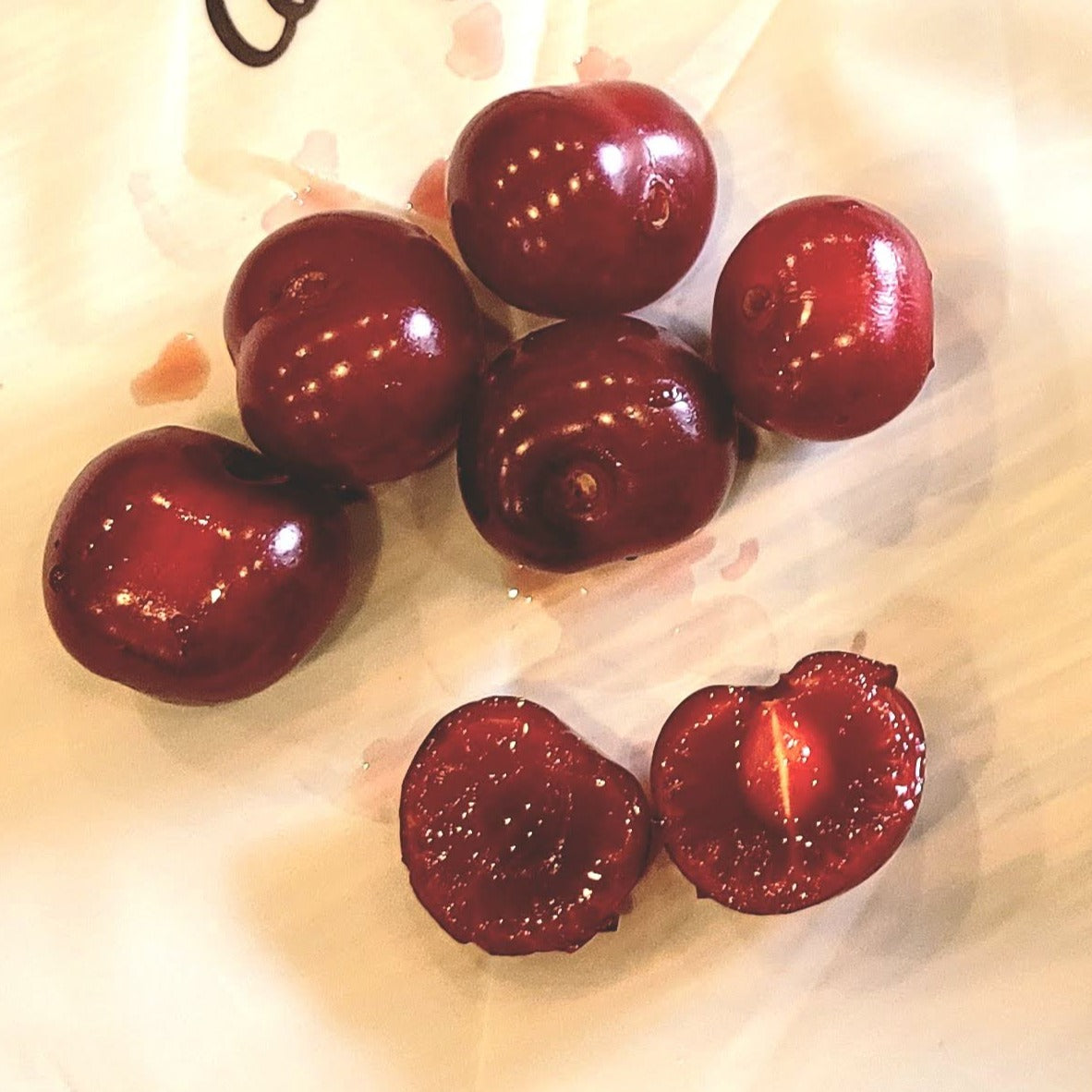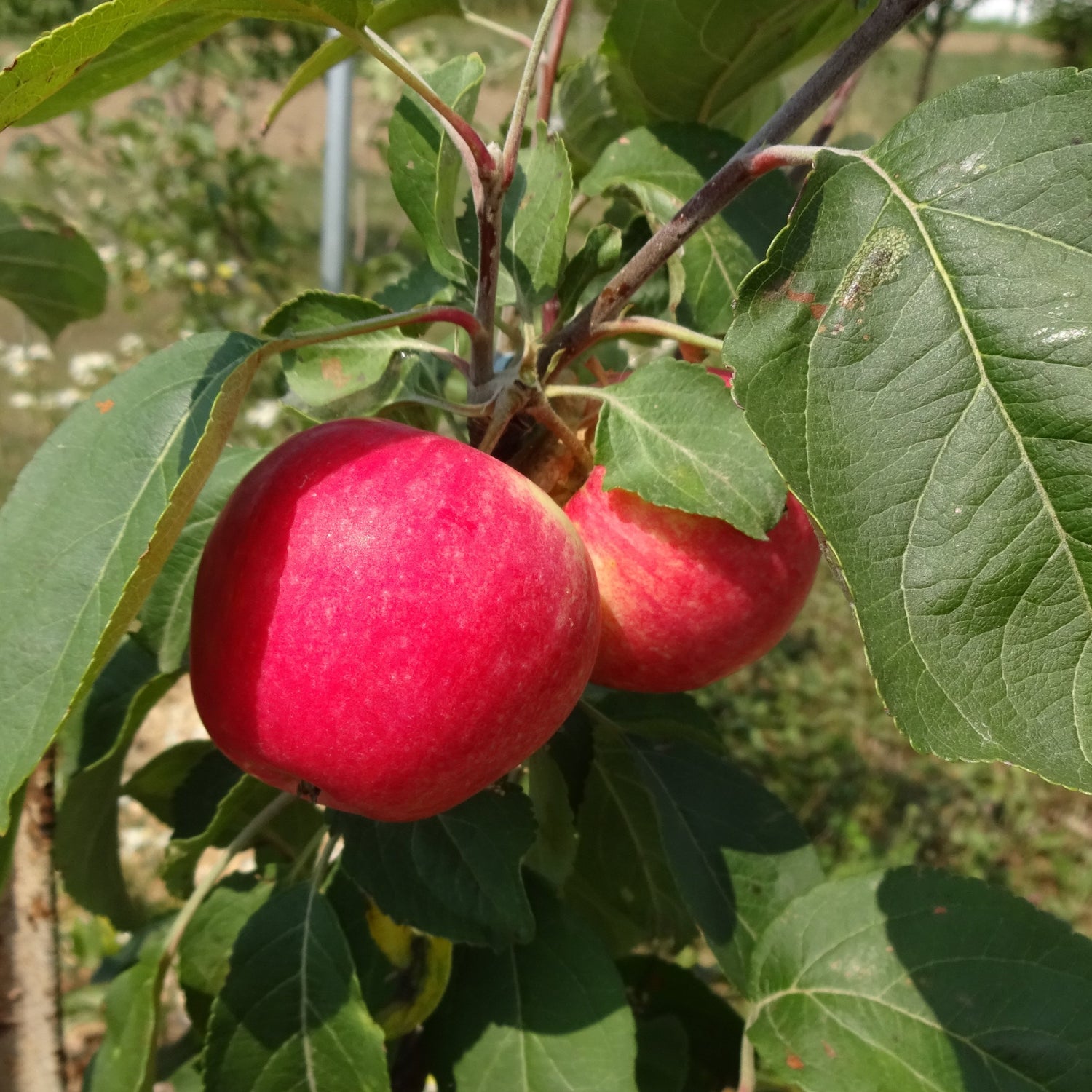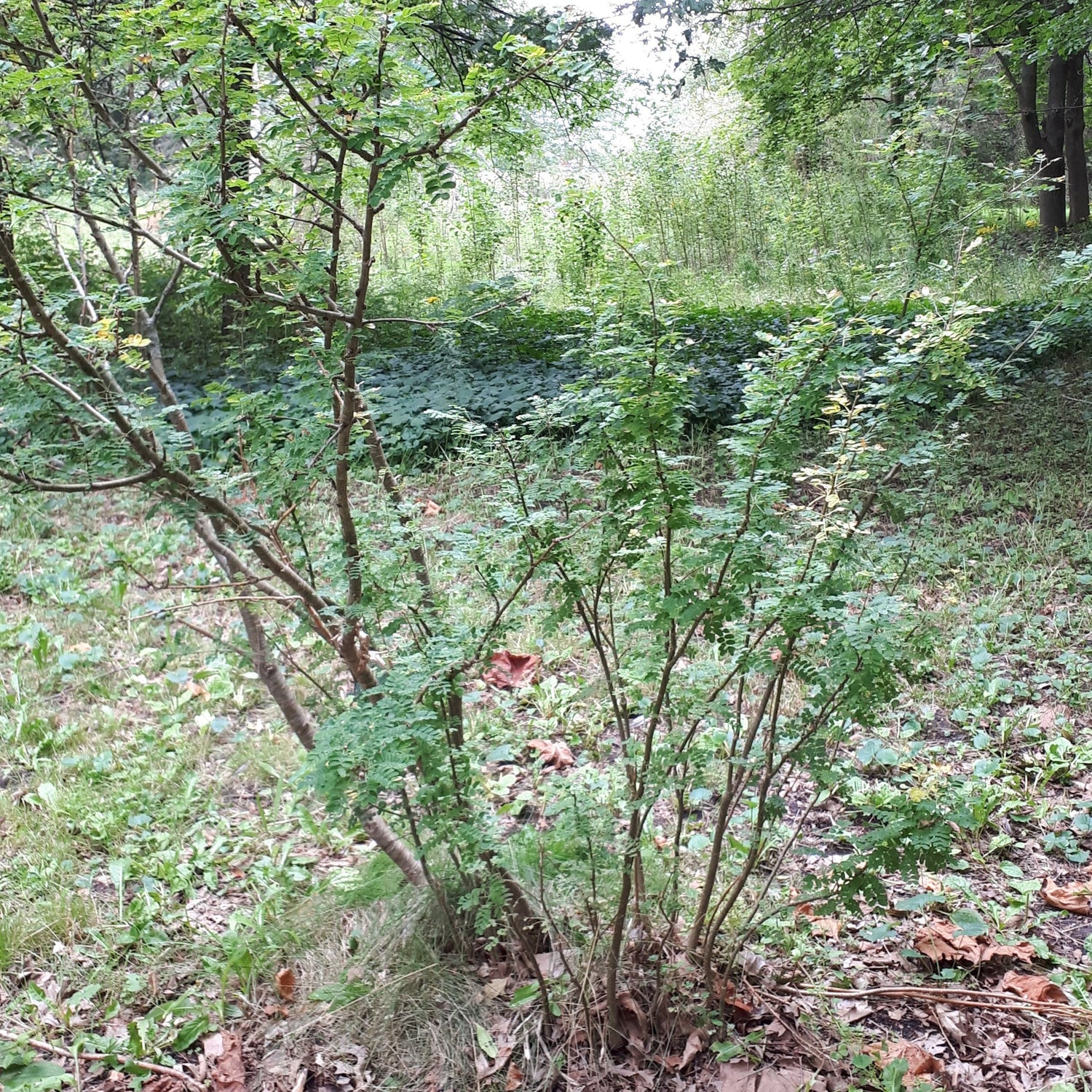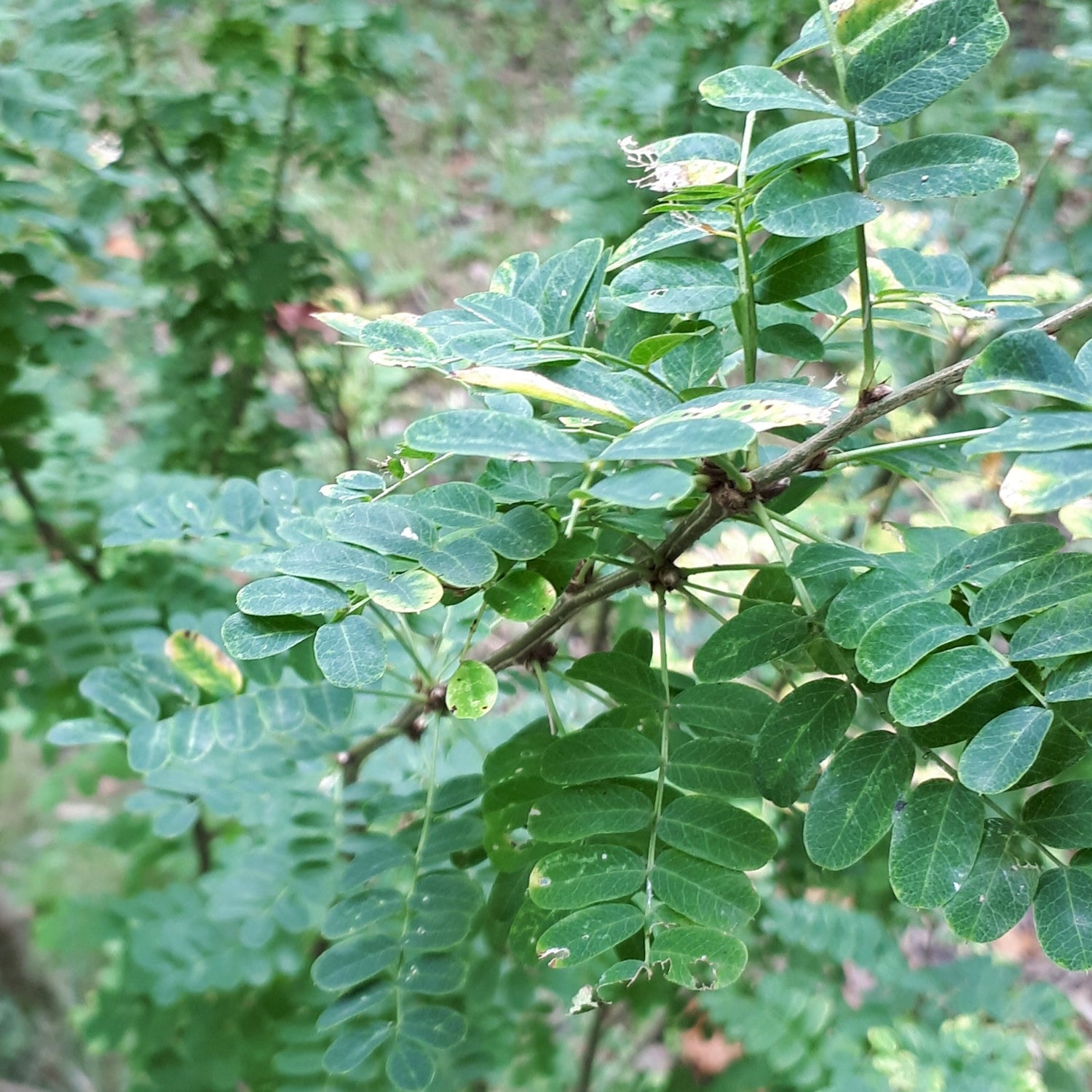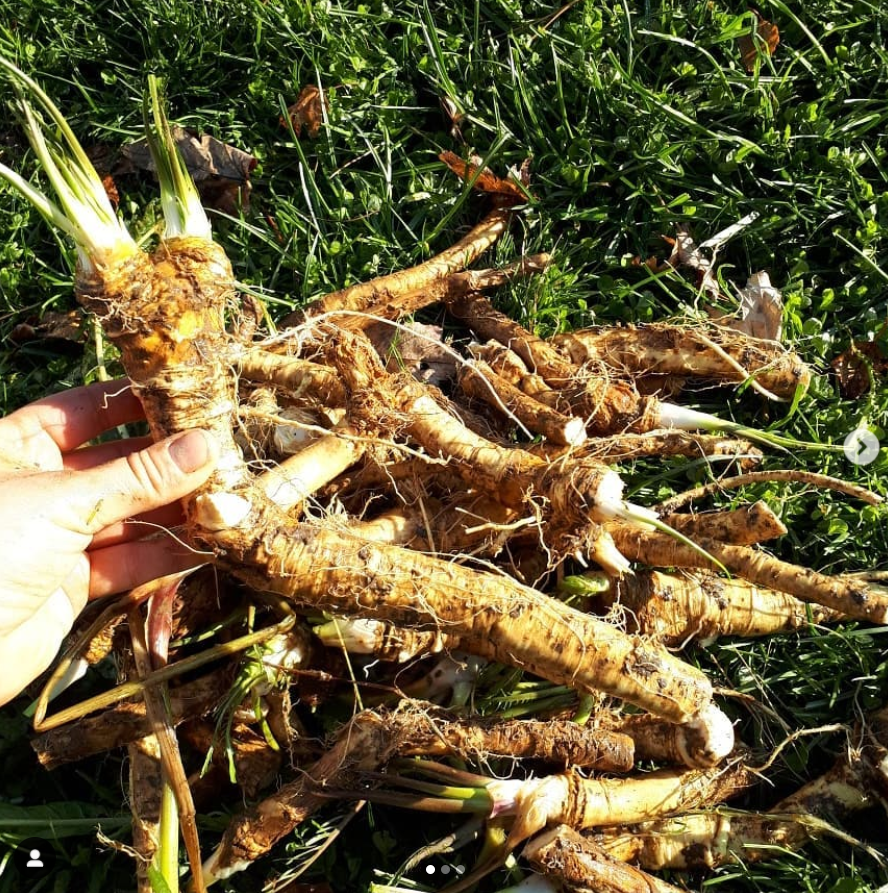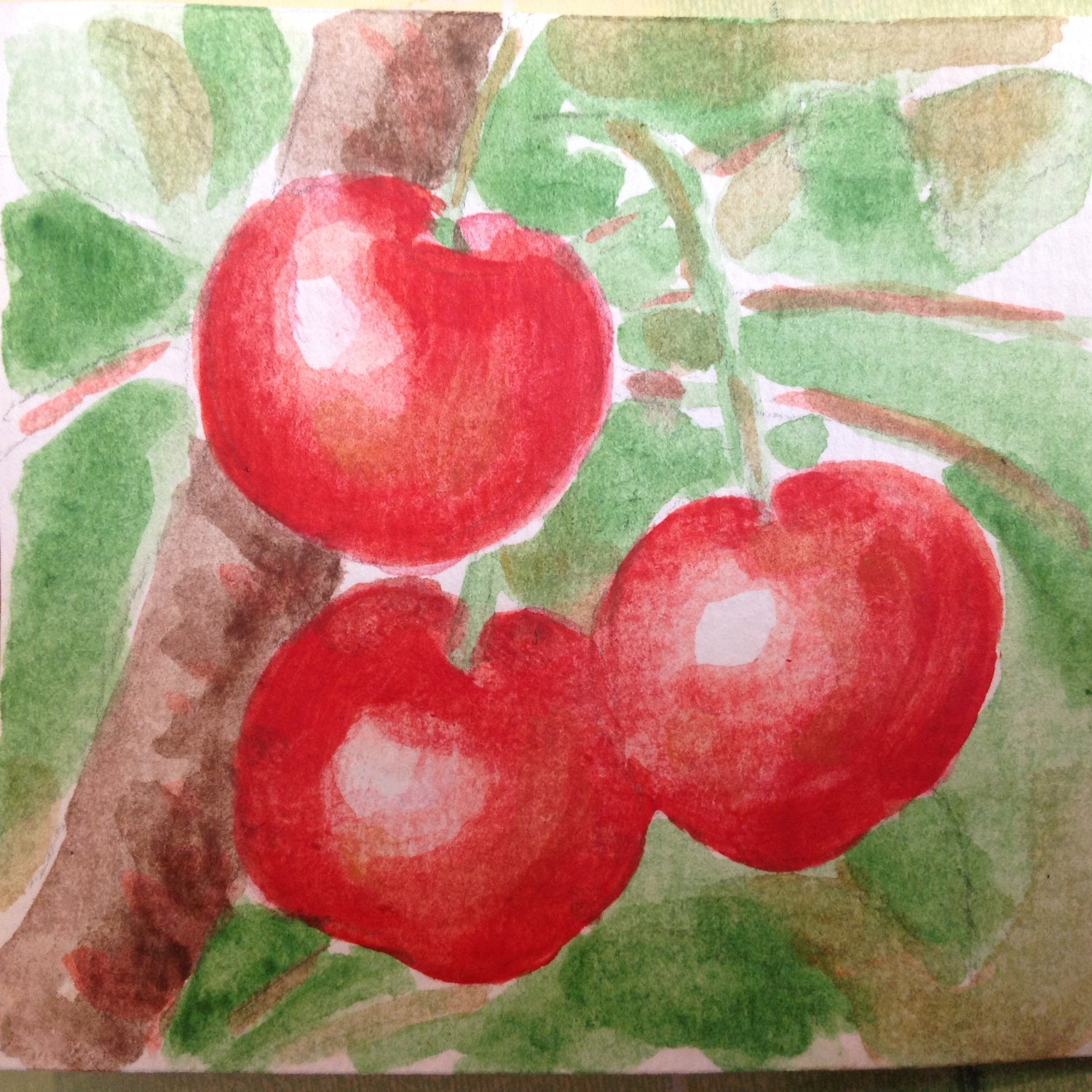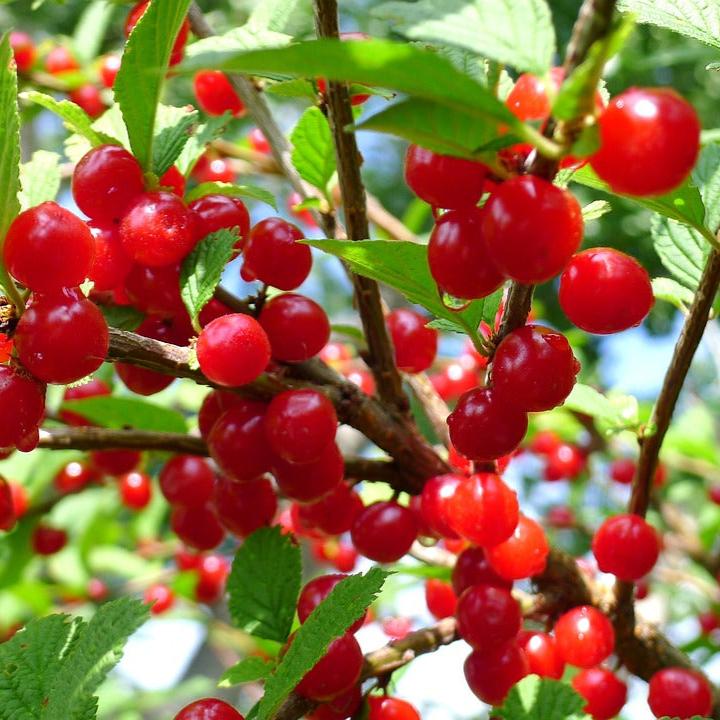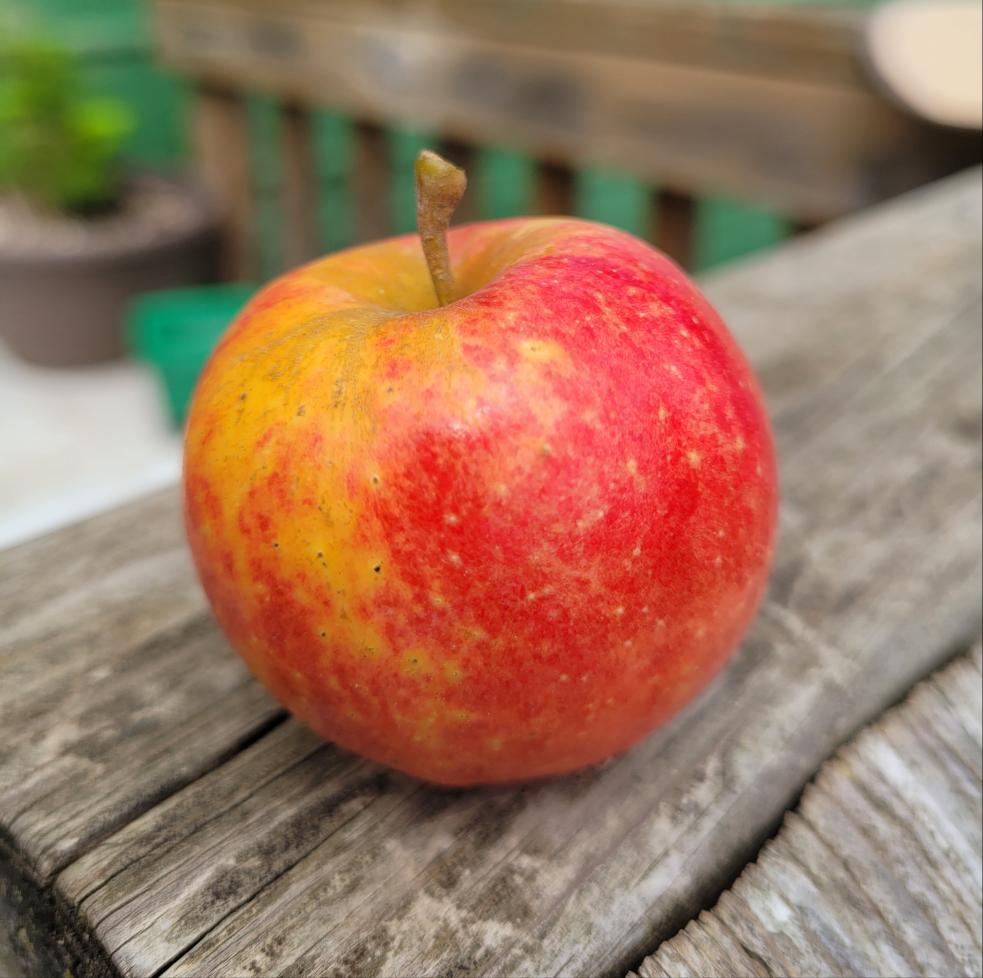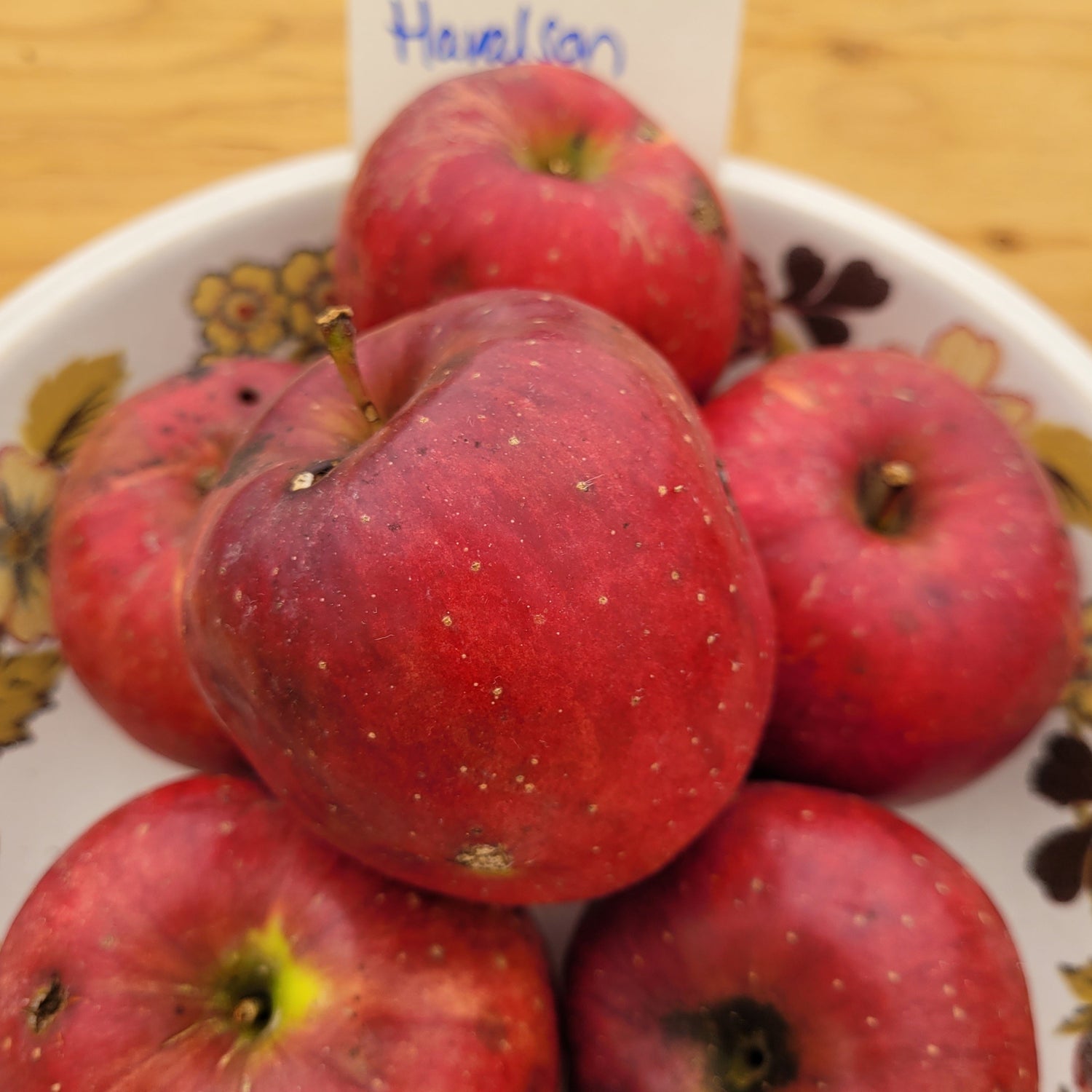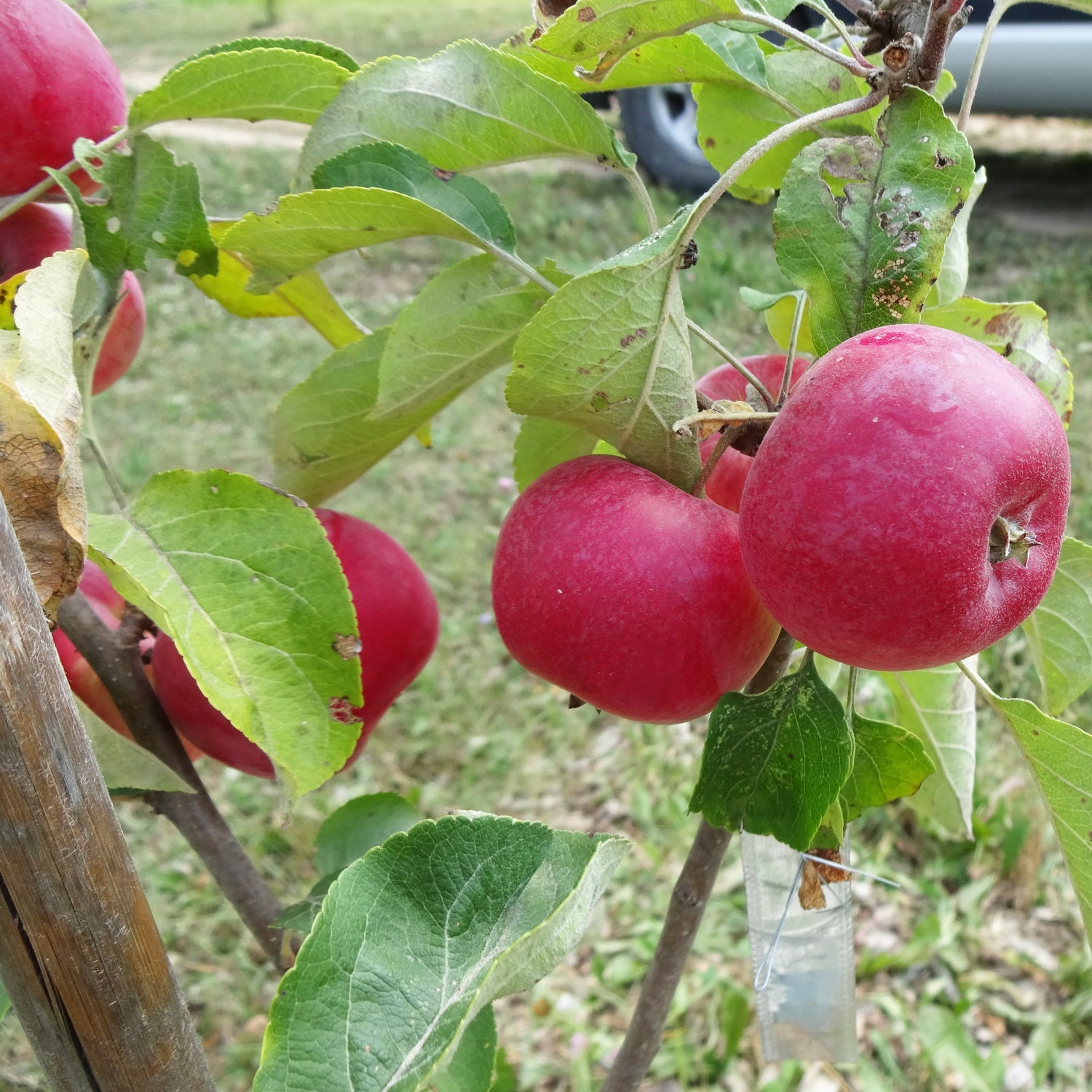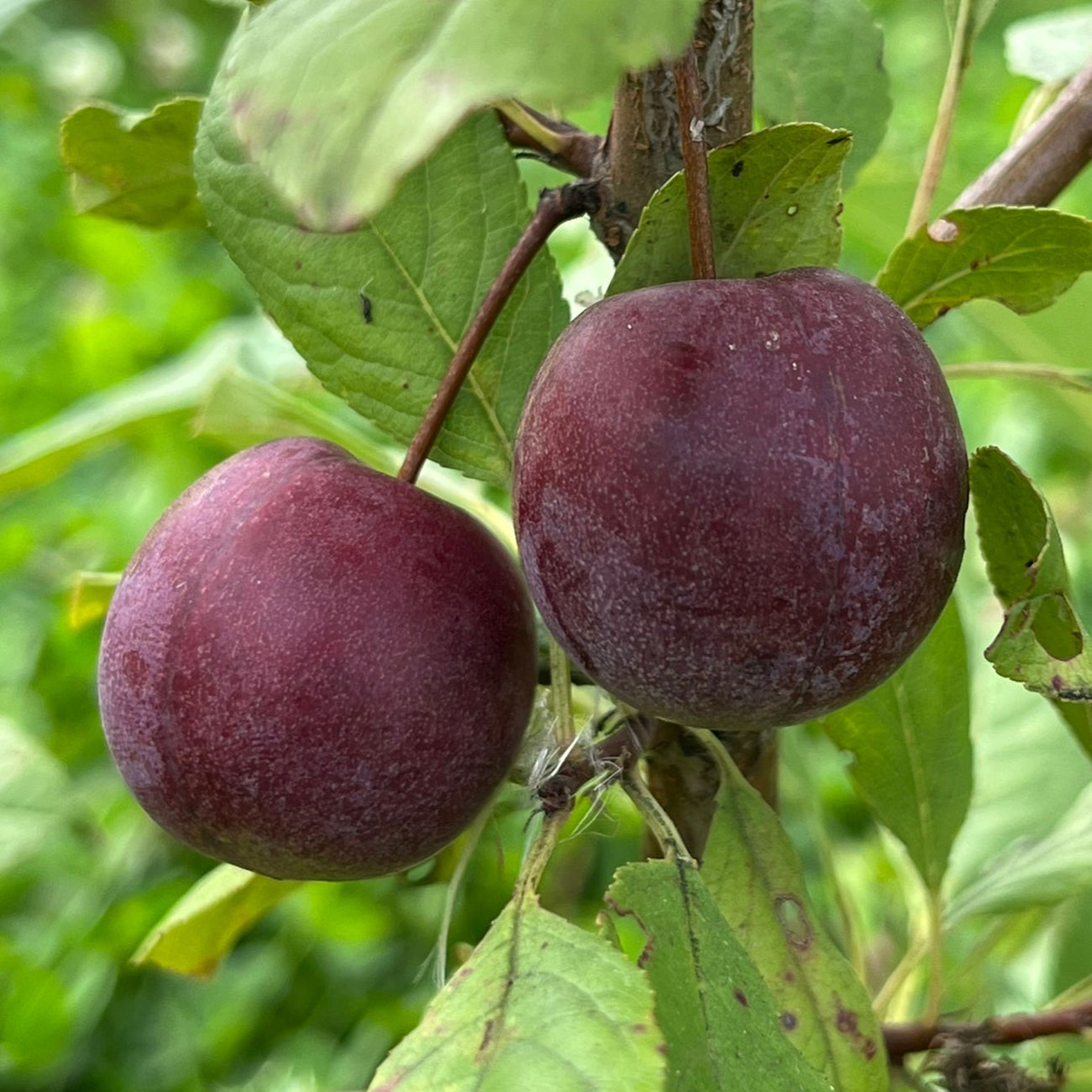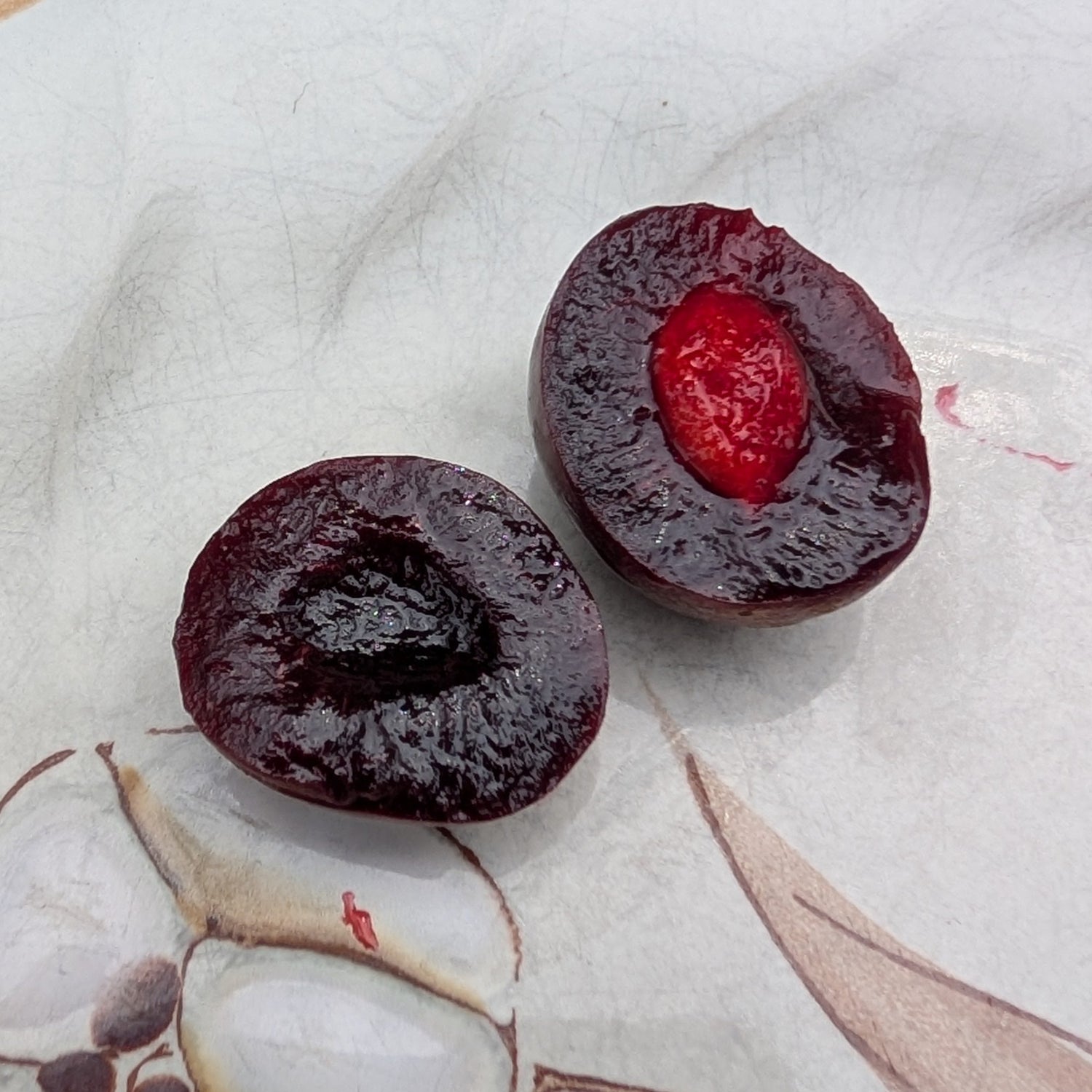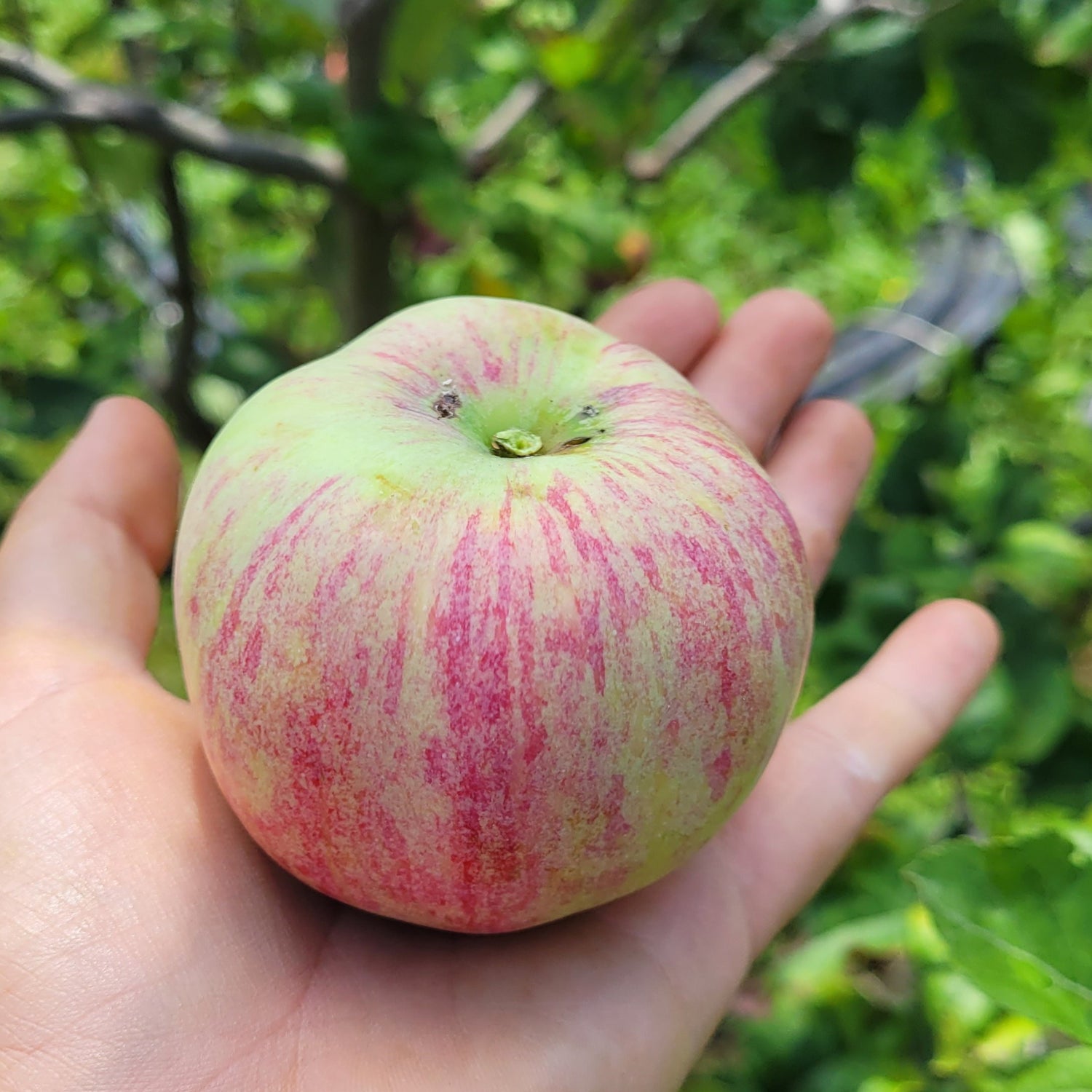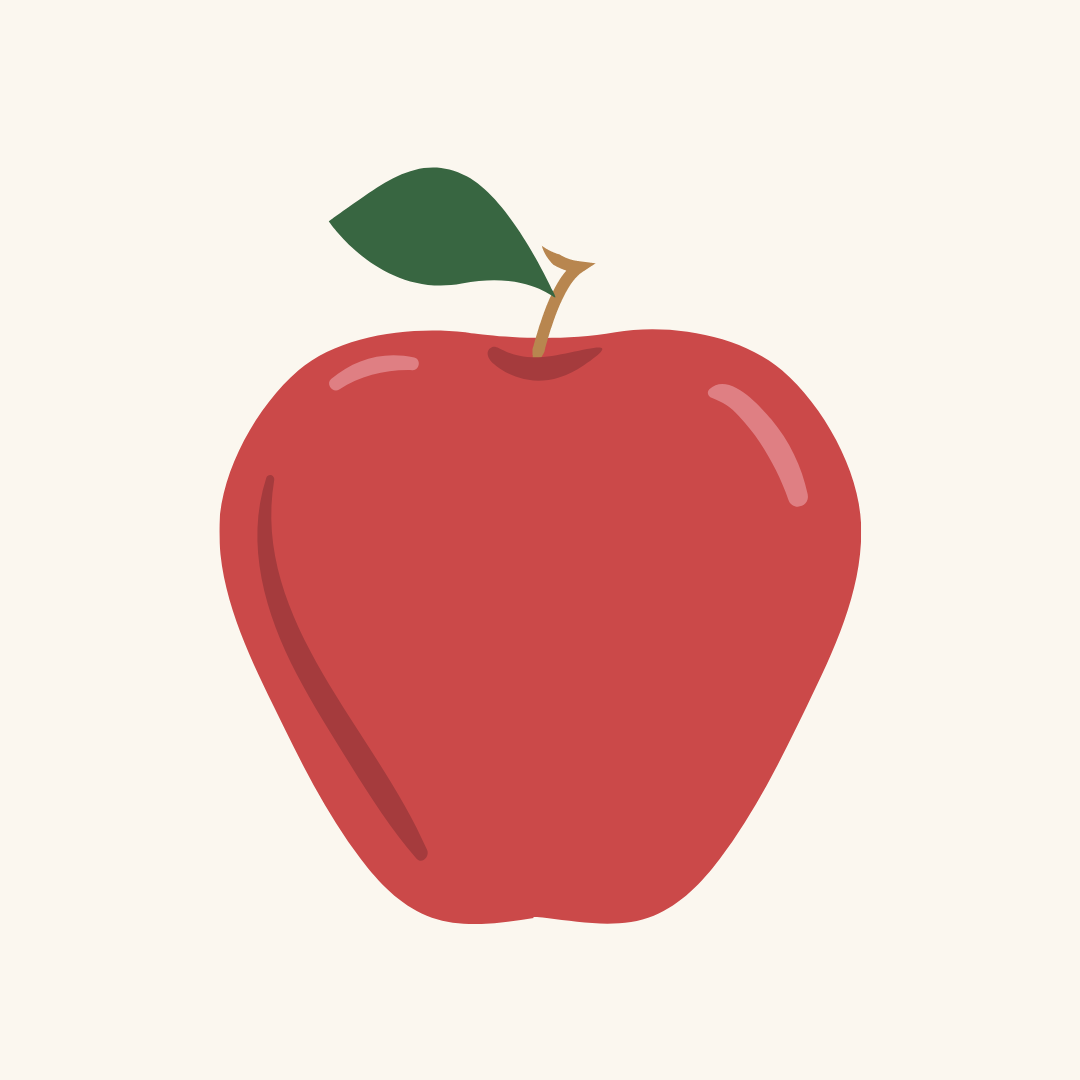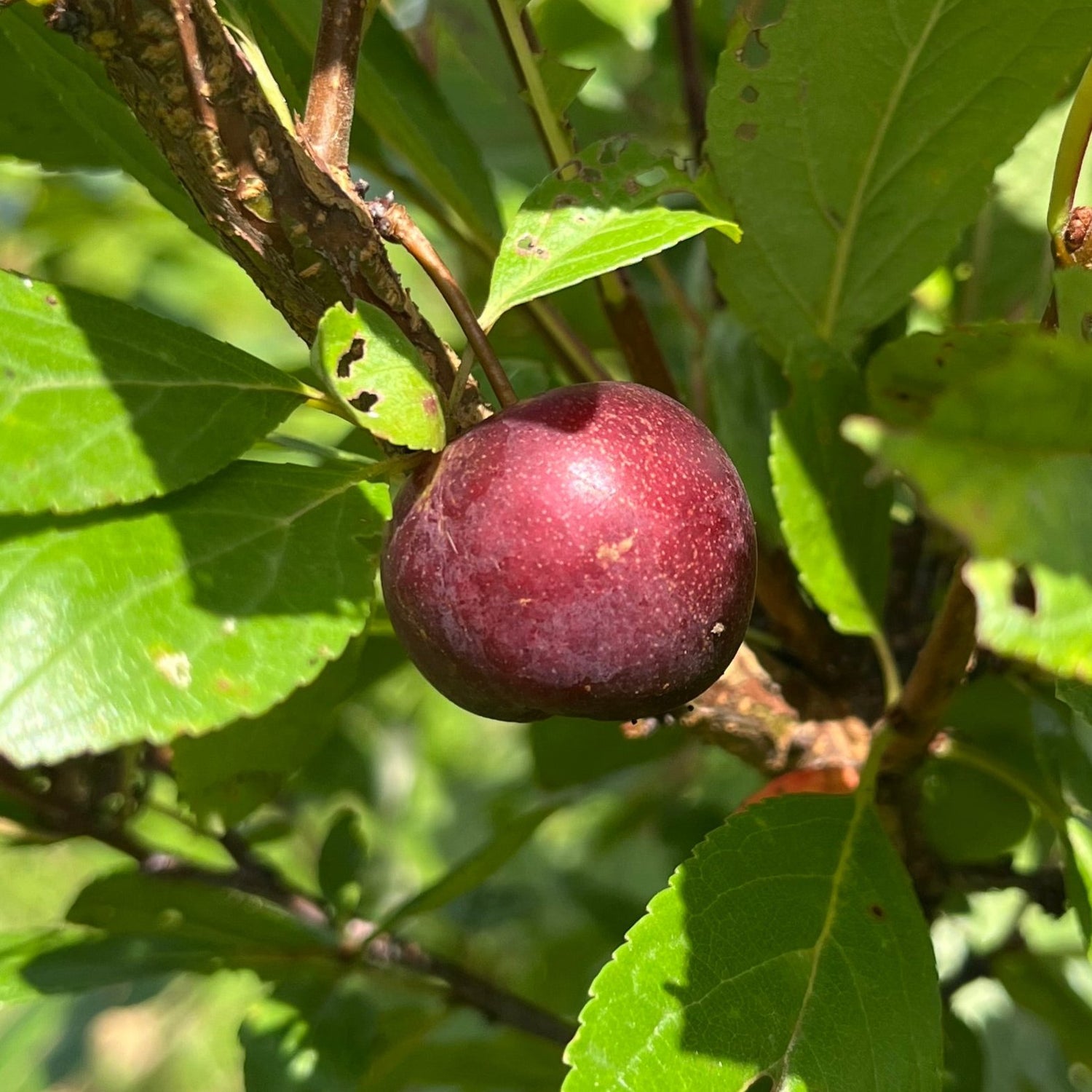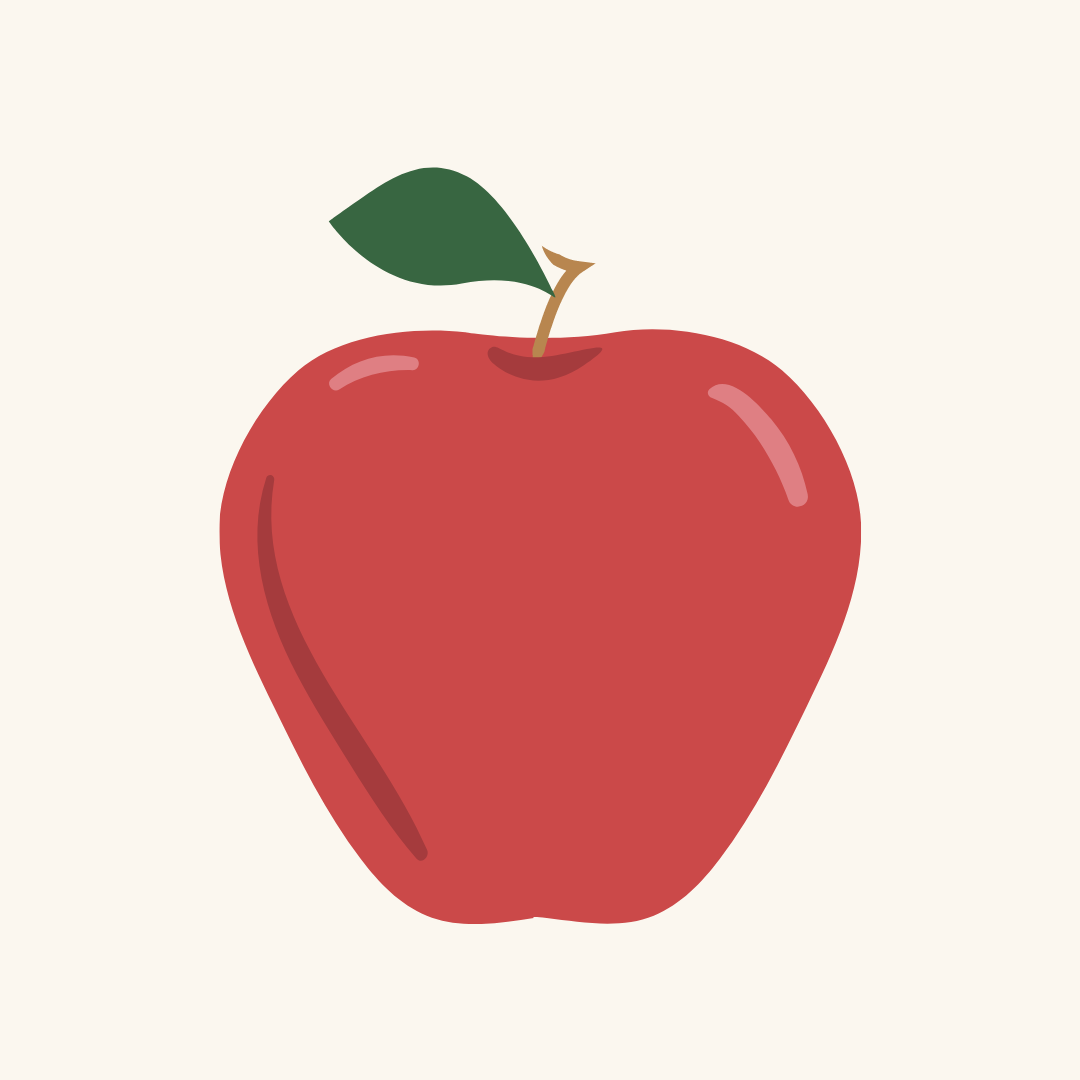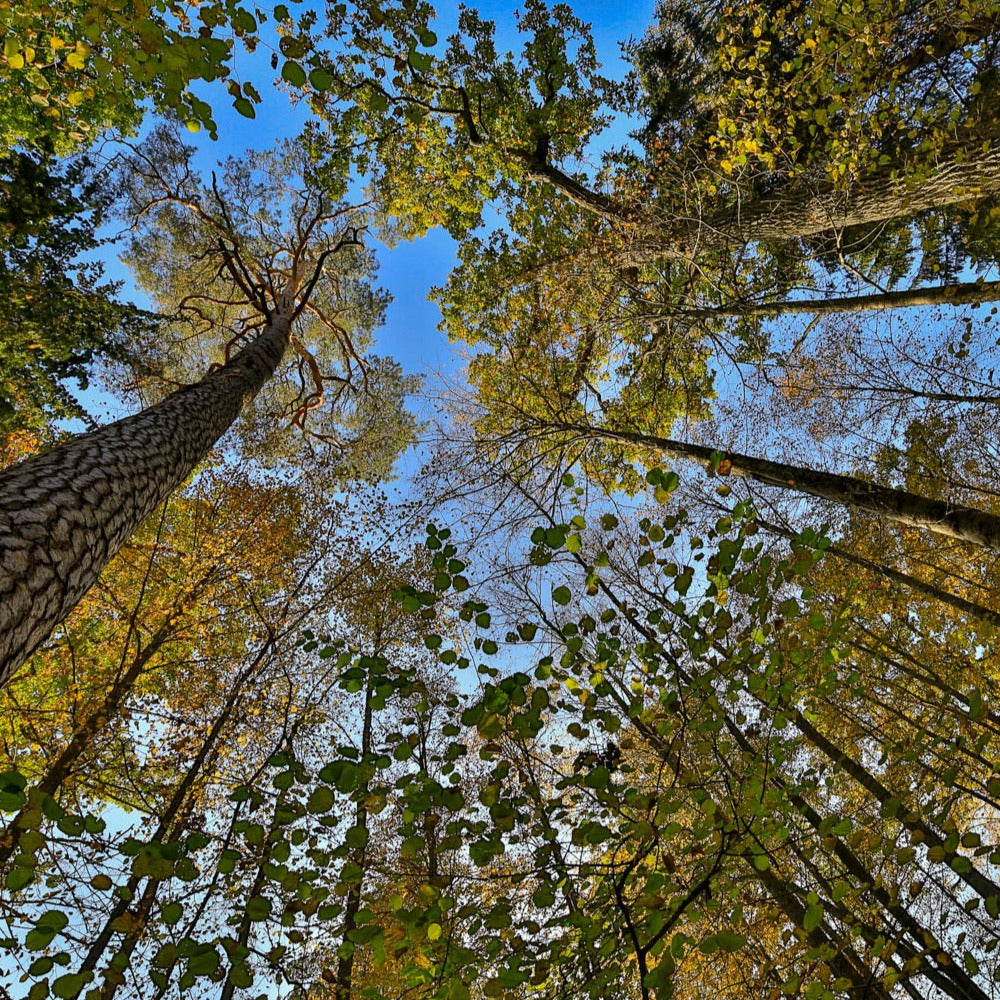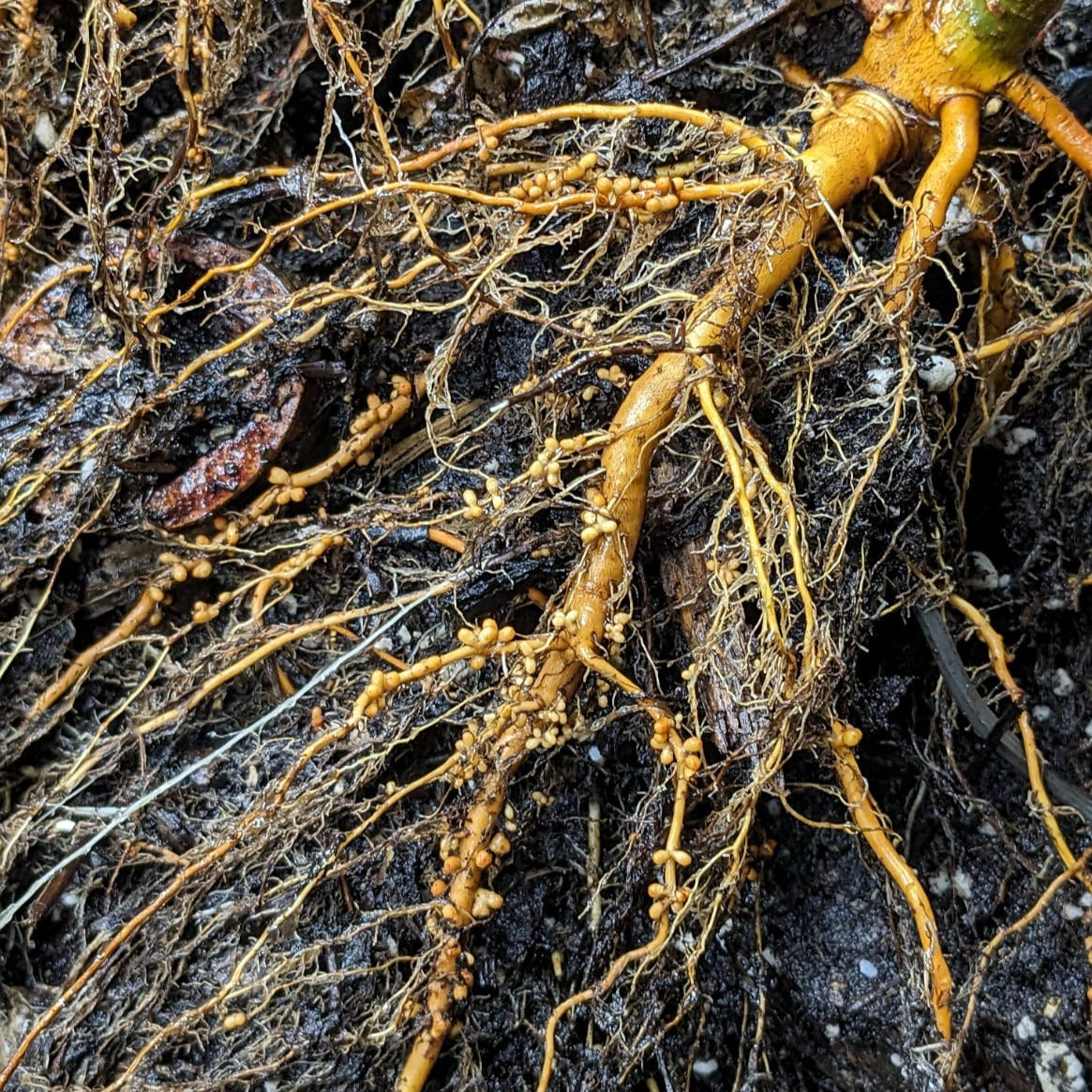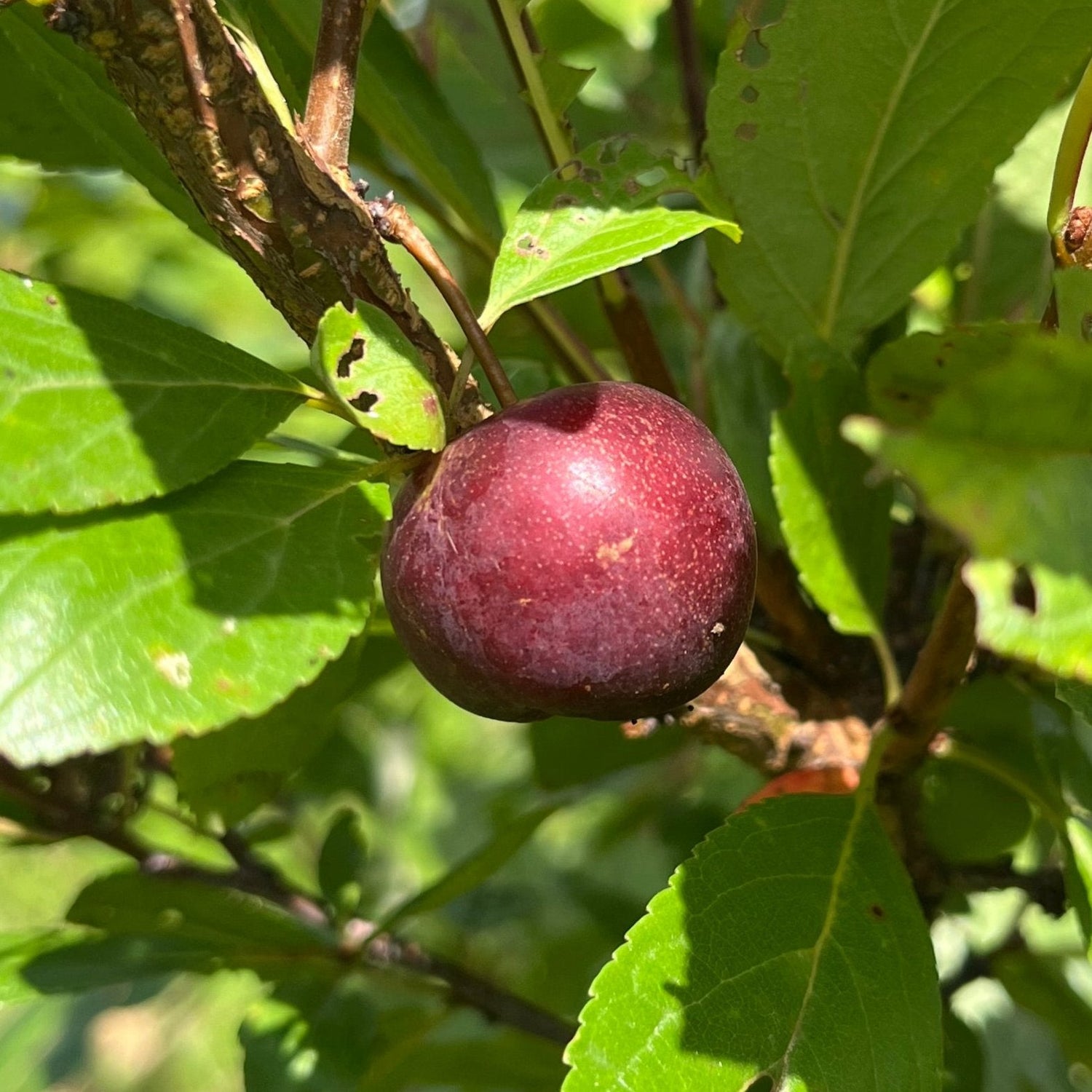All Zone 2 (or hardier) Plants
Sort by:
36 products
36 products
History: Crimson Passion dwarf sour cherries are one of several dwarf sour cherries developed and released by the University of Saskatchewan with the goal of creating sour cherries that were cold hardy, shorter in stature, and produced good quality fruit. This initiative began in the 1940s and Crimson Passion was released as part of the Romance series in 2004. It is the sweetest of the Romance series cherries.
Why We Grow It: Crimson Passion produces large sweet fruit, excellent for fresh eating or processing. It contains the same sugar content (20-22 Brix) as sweet cherries, but also contains the tangy flavour of sour cherries, combining the best of both worlds into one cold-hardy shrub. This variety reaches up to 10' at maturity, great for anyone with limited space.
Check our our blog post with some tasty sour cherry recipes!
History: Juliet dwarf sour cherries are one of several dwarf sour cherries developed and released by the University of Saskatchewan with the goal of creating sour cherries that were cold hardy, shorter in stature, and produced good quality fruit. This initiative began in the 1940s and Juliet was released as part of the Romance series in 2004.
Why We Grow It: With good yield and deep red medium-sized fruit, Juliet is a favourite for those that enjoy the sweet-tart flavour! This is an excellent variety for the fresh market or processing. For anyone short on garden space, these cherry bushes reach 6-8 feet at maturity.
Check our our blog post with some tasty sour cherry recipes!
History: Kerr is an applecrab (cross between crabapple and apple) with Dolgo and Haralson parentage. It was developed at the Morden Research Station in Manitoba in the 1950s and named after plant breeder and ecologist William Les Kerr who was working at the station at the time.
Why We Grow It: The fruit is a pleasant dark red and unlike true crabapples, has a pleasantly sweet and tart flavour that makes it good for fresh eating. Although small, the fruit stores well and are quite juicy which makes them good for pressing. The juice does well when added to cider blends.
History: Dolgo crabapples originated in Russia and due to the slightly elongated shape of the fruit were named 'dolgo' which means 'long.' They were brought to the United States by N. E. Hansen around 1897.
Why We Grow It: Dolgo is a classic crabapple with a vibrant flavour, very tangy and delicious right off the tree in the heat of summer- as refreshing as lemonade! The bright red fruits are about the size of small plums. These apples are excellent for making jelly or as a unique addition to a cider blend. Along with being exceptionally cold hardy, the trees themselves are quite pretty and are often planted ornamentally.
Species: Amelanchier alnifolia (aka Western Serviceberry)
History: Northline was developed by John Wallace at Beaverlodge Nursery in Beaverlodge, Alberta during the 1950s. Selected for its large berries and good flavour, Northline was later introduced in 1960.
Why We Grow It: Northline's large, sweet purpley-blue berries are excellent enjoyed fresh! Northline grows in an upright fashion and reaches about 2.5m tall, this making for an ideal u-pick bush. The fragrant showy flowers add aesthetic charm to the bush, along with the deep green foliage which turns fiery orange in the fall. Saskatoons by nature are slow growing, and while they will bear fruit in 3-5 years, it can take up to 15 years for a full crop.
History: Romeo dwarf sour cherries are one of several dwarf sour cherries developed and released by the University of Saskatchewan with the goal of creating sour cherries that were cold hardy, shorter in stature, and produced good quality fruit. This initiative began in the 1940s and Romeo was released as part of the Romance series in 2004.
Why We Grow It: Romeo boasts very dark red fruit that has a nice sweet-tart flavour and plenty of juiciness. It has a high flesh to pit ratio, making each cherry just that much more enticing. Although the bush only reaches 7-8ft at maturity, it still yields around 25lb of fruit per plant.
Check our our blog post with some tasty sour cherry recipes!
Species: Lonicera caerulea
History: Boreal Beauty haskap is part of the Boreal series of haskaps developed by Bob Bors at the University of Saskatchewan. The goal of the Boreal series is to cross haskaps from Russia, Japan, and the Kuril Islands to create superior cultivars with the best qualities of all three strains. Boreal Beauty was released in early 2017, chosen for its large size, firmness, and good flavour. Its name, a reference to Beauty and the Beast, was meant to be a handy way to remember that Boreal Beast is the recommended for pollination partner for this variety, but in practice unfortunately the two don't overlap quite enough for pollination to be optimal.
Why We Grow It: Boreal Beauty sports large berries that are more oval-shaped and firm than other haskaps while maintaining with good flavour. This variety could show promise for mechanical harvesting. It is also quite vigorous and produces heavy crops.
Species: Lonicera caerulea
History: Boreal Beast was developed by Bob Bors at the University of Saskatchewan as part of the Boreal series of haskaps. The goal of the Boreal series is to cross haskaps from Russia, Japan, and the Kuril Islands to create superior cultivars with the best qualities of all three strains. Boreal Beast was rated very highly for flavour in the breeding program. Named after Beauty and the Beast, Boreal Beast was intended to be the pollination partner for Boreal Beauty but in practice it has been found that their pollination times don't quite overlap.
Why We Grow It: Boreal Beast is noted for its excellent flavour with a great aroma and pleasant aftertaste. The shrub itself is quite vigorous and sturdy, and produces good-sized crops of delicious medium-sized berries.
History: Chestnut crabapples were bred at the University of Minnesota in 1949. They are one of about thirty varieties that have been produced by the university's breeding program since it started in 1888.
Why We Grow It: The rosy-red Chestnut crabapple produces fruit that is unusually large for a crabapple with a nutty taste. Unlike other crabapples, it is sweet enough to eat fresh and can be used in cider while still being good for traditional crabapple recipes such as making jellies.
Species: Lonicera caerulea
History: Boreal Blizzard was developed by Bob Bors at the University of Saskatchewan as part of the Boreal series of haskaps. The goal of the Boreal series is to cross haskaps from Russia, Japan, and the Kuril Islands to create superior cultivars with the best qualities of all three strains. While Boreal Blizzard is only a cross between Russian and Japanese varieties, it has produced some of the largest berries the breeding program has seen while boasting good flavour!
Why We Grow It: Boreal Blizzard produces exceptionally large berries that are meaty and sweet. This heavy cropper is ideal for U-pick operations and small farms where the larger berries make them more suitable for hand-picking.
Species: Amelanchier alnifolia (aka Western Serviceberry)
History: Martin was grown by Dieter Martin in Saskatchewan. He selected this variety for its large berries and uniform ripening time.
Why We Grow It: Martin produces deep purple berries that are both flavourful and juicy! The berries are on the larger size and ripen at more or less the same time, making them a good choice for mechanized picking.
Species: Lonicera caerulea
History: Blue Banana was developed by Lidia Stuart of Berries Unlimited, potentially bred from Russian varieties or a cross between Russian and Japanese varieties. The variety is named for the unique shape of the berries and was likely selected for their large size and sweet flavour.
Why We Grow It: Blue Banana is exceptionally sweet compared to other haskap varieties and the flavour has been described as 'smoked strawberry.' These large, sweet berries are good for fresh eating along with cooking, baking, preserving, etc! The bush itself grows quickly and is relatively disease resistant.
Species: Amelanchier alnifolia (aka Western Serviceberry)
History: Smokey (sometimes spelled Smoky) likely originated in Alberta. This productive variety was once the main cultivar grown in Canada commercially.
Why We Grow It: Smokey saskatoon berries are optimal for the fresh eating market with a mild sweet flavour. These berries are a great substitute for blueberries. Smokey is one of the best yielding varieties, and grows up to 12 feet tall. Saskatoons by nature are slow growing, and while they will bear fruit in 1-3 years, it can take up to 15 years for a full crop.
Photo by Cindy Malette from Burst
History: Carmine Jewel is one of several dwarf sour cherry shrubs developed at the University of Saskatchewan in an effort to combine cold hardiness, dwarf stature, and good quality fruit into one variety. This effort was started by Dr. Kerr (for whom Kerr applecrabs were named) in the 1940s and Carmine Jewel was released in 1999. It is considered the hardiest of the cherries they developed. Carmine Jewel cherries are now the most commonly grown commercial cherries in the prairies.
Why We Grow It: Carmine Jewel is a notably productive cultivar with small cherries that have a high flesh-to-pit ratio. Thanks to their firm flesh, they are a preferred variety for freezing and drying. The shrub is on the smaller size, reaching 6-7ft once mature, great for anyone who loves cherries but doesn't have a lot of space!
History: Norland apples were created by Dr. C.R. Ure and introduced in 1979 by the Agriculture Canada Research Station in Morden, Manitoba.
Why We Grow It: Since this variety was bred to survive in the prairies, it is very cold hardy. The fruit is medium-sized with sweet flesh that is good for fresh eating or applesauce. It bears heavy annual crops starting early in the life of the tree. A home orchardist in Dacre, ON described the fruit as "lovely with no pest damage; juicy, creamy-fleshed with excellent flavour."
Species: Caragana arborescens
History: As the name implies, Siberian pea shrubs are native to Siberia but also parts of China, Mongolia, and Kazakhstan. They came to the US with Eurasian immigrants who used the pods as a source of food while traveling. It has been planted ornamentally and as bonsai, and can be used as erosion control. It is also unfortunately invasive in some parts of the US.
Why We Grow It: A classic permaculture plant! Siberian pea shrubs are nitrogen fixing, very hardy, disease and drought resistant, and, above all, edible. The flowers and young pods can be eaten fresh while the older pods are cooked. The plants are also attractive to pollinators.
Species: Rubus occidentalis
History: Jewel black raspberries were bred by Cornell University in New York in an effort to create productive and vigorous black raspberry varieties. It was bred in 1954 as a cross between Bristol and Dundee black raspberries.
Why We Grow It: Black raspberries are a special treat with less tang than red raspberries, and more of that musky sweetness that black berries (mulberries, blackberries, etc.) have. Steph eats these berries by the handful - delicious! This variety produces nice clusters of sweet juicy berries. The plant itself reaches about a meter high and wide. It can spread over the years, creating a most delicious fence line if you let it!
Species: Armoracia rusticana
History: Horseradish originated somewhere in the Mediterranean and has been well known since ancient history, appearing in writings from Ancient Greece, Ancient Rome, and the Renaissance. It has historically been used for both culinary and medicinal purposes in Europe and was introduced to North America by European colonizers where indigenous peoples also adopted it for medicinal use. Today, horseradish is commonly grown around the world and used in cooking or to make sauces. An enzyme in horseradish also has applications in molecular biology and biochemistry!
Why We Grow it: Horseradish is a root vegetable with a distinctly pungent and sharp taste. As a result, it is most often used in cooking and making sauces/condiments. It is a hardy vegetable and has a tendency to spread through the garden so extra care should be taken to keep it contained when planting it.
History: Cupid is a part of the Romance series of dwarf sour cherry bushes developed and released by the University of Saskatchewan in 2004. Their goal was to create cold-hardy, dwarfing bushes with good quality fruit. Cupid was likely selected for its good flavour and unusually large cherries, the largest in the Romance series.
Why We Grow It: These dark red, cold-hardy cherries have a sweet-tart flavour that can be enjoyed fresh for fans of a more astringent flavour or used for cooking, baking, and preserving. Cupid has the largest cherries of all the dwarf sour cherries in the Romance series and also ripens the latest, helping to extend the season.
Species: Prunus tomentosa
History: Nanking cherry is native to parts of China, Tibet, Korea, and Mongolia, and possibly northern India. It has long been cultivated in Asia for its tart fruit which is used in pickling, making wine, juice, and jam, and as an ornamental plant. It was introduced to Britain in 1870 and the US in 1892 where it is also planted in hedgerows as a windbreak. Breeding programs in the US, Canada, and Russia began in the 1920s to make the fruit more palatable fresh but by the 1940s interest had unfortunately waned.
Why We Grow It: Although more closely related to plums than cherries, Nanking cherry is great for a variety of uses including wine, juice, jam, and as an ornamental plant thanks to their attractive pinkish-white blossoms. Some enjoy eating the tart fruit fresh as well and they are also popular with birds and wildlife. Nanking cherries are hardy and tolerant of quite cold weather, making them an excellent option for most parts of Canada.
History: Norkent was bred as a cross between Haralson and Rescue at the Morden Research Station. It was one of tens of thousands of seedlings sent across the prairies as part of the Prairie Fruit Breeding Cooperative initiative by Agriculture and Agri-Food Canada in the 1960s. It was planted at the University of Alberta before being moved again to a backyard in Edmonton once the university ran out of space to it grow.
Why We Grow It: This pleasant and aromatic apple is one of the best fresh eating apples for colder climates! The flesh of this red apple is crisp and said to taste like a cross between an apple and pear.
History: Haralson apples were developed at the University of Minnesota in 1922 and named after Charles Haralson who was superintendent of the university's fruit breeding farm. It is one of almost 30 apple varieties the university has developed in its breeding program since it began in 1888.
Why We Grow It: The skin of this variety is striped red with russet dots and the flesh is white, juicy, and of pleasant albeit mild flavour. Haralson boasts excellent cold hardiness and general disease resistance.
History: Parkland apples were variety created at the Morden Research and Development Centre in Manitoba and released in 1979. Like other varieties developed there, Parkland was designed to withstand the harsh prairie winters and is especially cold hardy. It has become the most commonly grown apple in Alaska after it was brought over in 1985 in an effort to determine which Canadian varieties could survive in the northern state.
Why We Grow It: Parkland is a very satisfying early season apple - sweet and crunchy. It's excellent snacking or applesauce although the fruit is small (about 2" diameter) with creamy flesh and red skin. The tree is quite hardy.
Species: Prunus pumila var. besseyi (Western sandcherry) x P. salicina (Japanese Plum)
History: Sapa (translated as 'black' from Lakota) was developed at the South Dakota Agricultural Experiment Station in the US by renowned plant breeder N. E. Hansen and released in 1908. His goal was to create plants hardy enough to grow in the harsh, northern prairies and was one of the first people to start breeding chums. Hansen had a tendency to name his native plant crosses after words from indigenous cultures of the area, choosing the Lakota word for 'black' in this case due to the dark colour of the fruit.
Why We Grow It: This small, hardy shrub produces purplish fruit with mauve flesh that has a sweet flavour with some tartness. It is good for fresh eating along with a variety of other uses such as cooking, baking, and preserving. It is also quite productive and tends to start bearing fruit at a young age!
History: This cold-hardy apple was developed in the prairies and is for growing in colder, northern areas.
Why We Grow It: This unique apple produces a yellow fruit with red stripes. It is a rather uncommon variety and is great for sauce. It has begun producing reliably in our test orchard the last few years, and always has a bountiful crop.
History: Westland apples were developed at the Alberta Special Crops and Horticultural Research Centre in Brooks, Alberta and introduced in 1979.
Why We Grow It: This medium sized pie apple is cold hardy, excellent for the prairies and northern regions. The fruit is large and a pale yellow-ish green with red flush and stripes.
Species: Prunus pumila var. besseyi (Western sandcherry) x P. salicina (Japanese Plum)
History: Manor was developed at the Morden Research Station in Manitoba and released in 1945.
Why We Grow It: Manor produces a small plum with skin that is nearly black when ripe and purplish-red flesh. When ripe, the fruit is quite sweet and good for fresh eating! Some prefer to pick it when it is still a little unripe and a bit firmer since it is more astringent and lends itself well to uses such as baking, preserving, and making wine. The shrub stays smaller than other chums but starts bearing fruit at a young age and is known for being quite productive.
History: Norhey comes from the Morden Research Station, Agriculture Canada. It was created by Dr. C. R. Ure in the 60's to survive the harsh prairie winters. It was introduced in 1975.
Why We Grow It: It seems Dr. Ure was successful since this is about the hardiest apple we've come across. The fruit has green skin that turns yellow after picking. It's fair for fresh eating, good for cooking and juicing with sweet, sub acid flavours and creamy crisp flesh. The tree has consistent, heavy crops.
Species: Alnus incana (likely subsp. rugosa)
History: Native to large portions of the Northern Hemisphere including parts of North America, Europe, and Asia, this widespread tree is often divided into six subspecies. We likely offer Alnus incana subsp. rugosa but with seedlings it is hard to say for sure. Indigenous people have used these trees for medicine and dyes, and they can also be used for erosion control. This subspecies in general is unique for its cold hardiness and ability to fix nitrogen, making it a useful companion plant in permaculture settings.
Why We Grow It: Named for the white lenticels that dot the reddish-gray bark, Speckled Alders can make a useful addition to a permaculture with their ability to fix nitrogen. However, keep an eye on this tree as it tends to spread via suckering (sending up new shoots) and layering (branches rooting into the ground) and can form dense thickets.
Species: Prunus pumila var. besseyi (Western sandcherry) x P. salicina (Japanese Plum)
History: Dura was developed at the Morden Research Station in Manitoba and was released in 1942.
Why We Grow It: Dura produces small red fruit with sweet mauve flesh. They are good for eating fresh along with cooking/baking, preserving, and juice! This hardy shrub is generally disease resistant and is naturally dwarfing.
